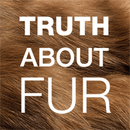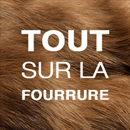October News: No Winner Yet in Natural Fur vs Fake Fur Debate
by Truth About Fur, voice of the North American fur tradeThe debate over natural fur vs. fake rages on in the media, but with no new arguments being put on…
Read More
The debate over natural fur vs. fake rages on in the media, but with no new arguments being put on…
Read More
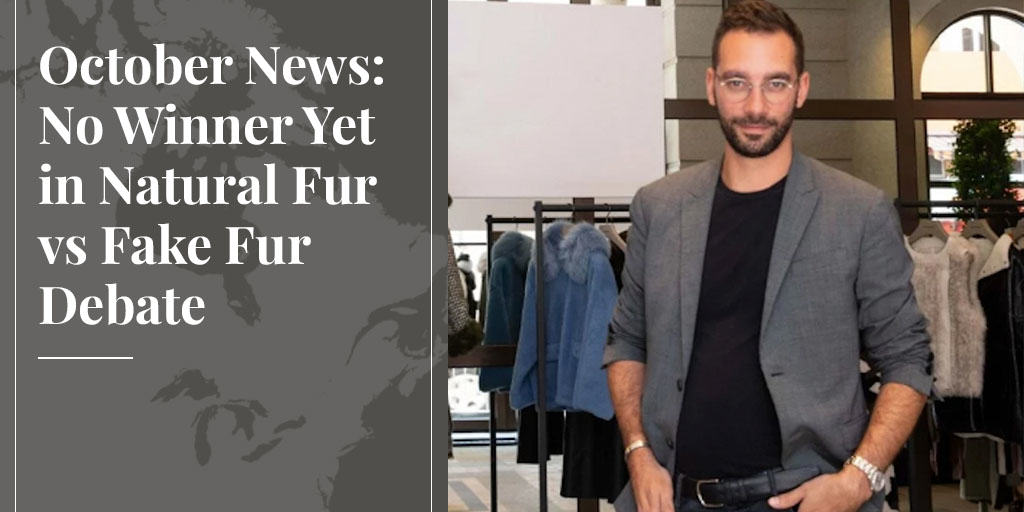
The debate over natural fur vs. fake rages on in the media, but with no new arguments being put on the table, it's hard to tell whether our industry is gaining ground. On the upside, the sustainability argument is now front and centre, and fake fur is taking a beating, as in a recent Huffington Post piece, "Faux fur is made of plastic, and it's not helping the environment." On the downside, almost all media reports are using the same cute but unhelpful hook: that both natural and fake fur are bad, so what are we to do? Here's a classic example, from Fashion United: "Fashion's battle with fur: real vs faux".
They call it "balanced reporting", but there are no winners when the message getting out is that neither natural fur nor fake fur is the way to go.
But heh, let's be optimists, like Thomas Salomon, fourth-generation owner of designer brand Yves Salomon. Thomas is a great spokesman for the fur trade as a whole, not just the retail sector, and he is adamant that the cloud now hanging over natural fur has a silver lining. When asked by Hong Kong Tatler whether fur was "a dying industry," he responded, "It’s not a dying industry, but rather it’s a time where it’s modernising itself."
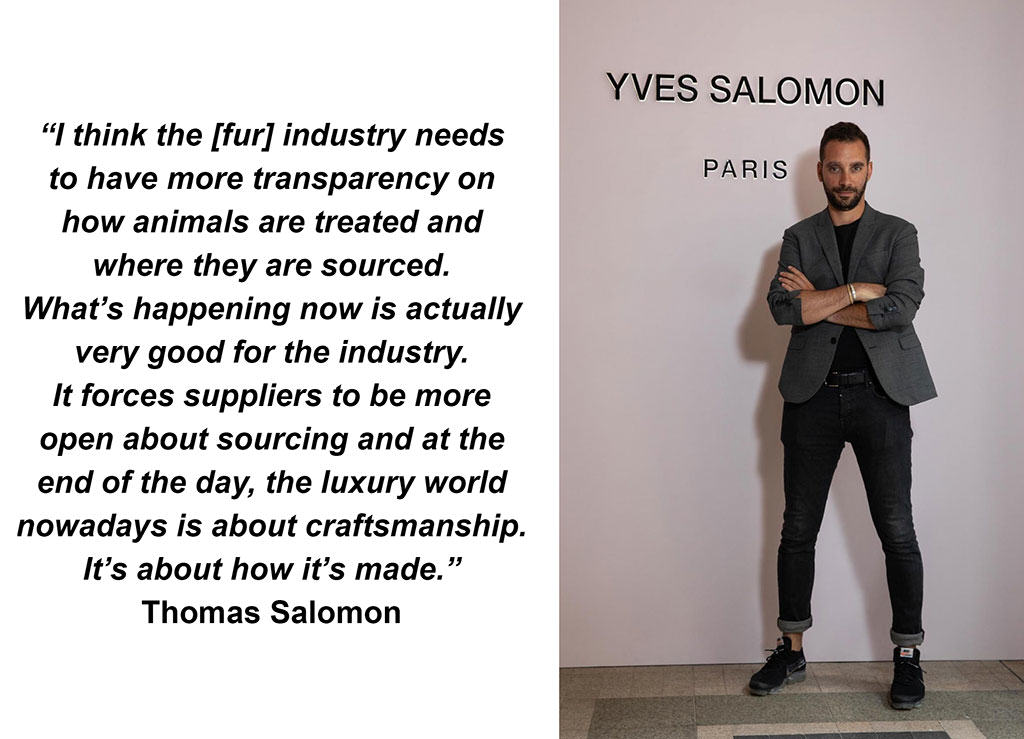
In other fur fashion news, the Korea Herald covered last month's Asia Remix, a contest for young designers working with fur, organised by the International Fur Federation. On hand to spread the word was Kelly Xu, CEO, IFF Asia Region. “Using fake fur damages the Earth, with the waste going to the oceans, affecting the entire ecosystem,” she said. “Fur is natural material which has been used by humans for thousands of years. It is biodegradable, it is sustainable fashion.”
Meanwhile, there's nothing better for a designer brand than some celebrity endorsement, and guess who reaped the windfall last month? When actress Katie Holmes stepped out in Manhattan, she was wearing a snuggly fox-trimmed coat from none other than Yves Salomon. Interestingly, celebrities are in far less of a rush to ditch fur than designer brands like Gucci.
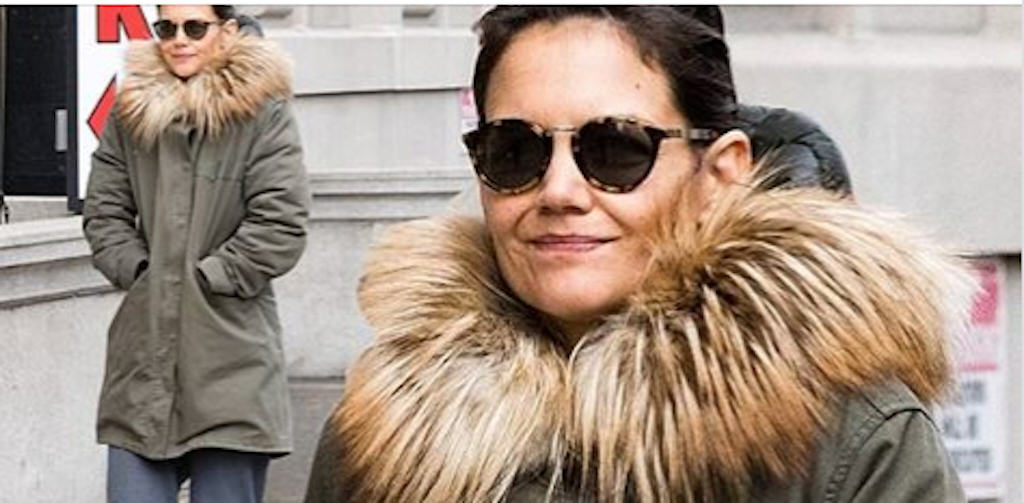
Urban wildlife has been in the news again, and will be a regular fixture in the future. Even on the other side of the pond there's interest in North America's special problems, with the UK's Guardian featuring Toronto's raccoons. For some residents they are "scrappy heroes" but for others they are "villainous thugs". In case you missed it, "Conrad" the raccoon achieved fame posthumously when he died on a Toronto street in 2015. During the 12 hours it took for city services to pick him up, 'coon fans erected a memorial shrine to him.
Raccoons, of course, are a primary carrier of the rabies virus. A staggering statistic in "The value of modern day trapping" in The Bradford Era is $550 million - the cost of controlling rabies in the US annually. Without trapping, it is estimated this would balloon to $1.5 billion.
Urban coyotes are at it again, this time in Roswell, Georgia. Trapper Tim Smith was called in and soon trapped four. “They’re eating all the small dogs in the neighborhood, rabbits, every once in a while, we’ll get one that wants to come up to kids at the bus stop,” he said.
SEE ALSO: Will urban coyotes change the animal rights debate?
While North Americans argue about the place of trapping in wildlife management, New Zealanders understand. True, their eradication programs target invasive species, such as possums and rabbits, but animal rights opposition is almost unheard of. Here's an inspiring story of one man's efforts to protect a breeding colony of indigenous seabirds from rats, stoats, mice and hedgehogs. "Unfortunately, conservation in New Zealand is all about killing things,'' says conservationist Graeme Loh. "It is grim. I've been involved in the biodiversity part of things for many years, and most of my work has been working out better ways to kill more of the right stuffs at the right time.''
SEE ALSO: New Zealand designer embraces wild rabbit "eco-fur".
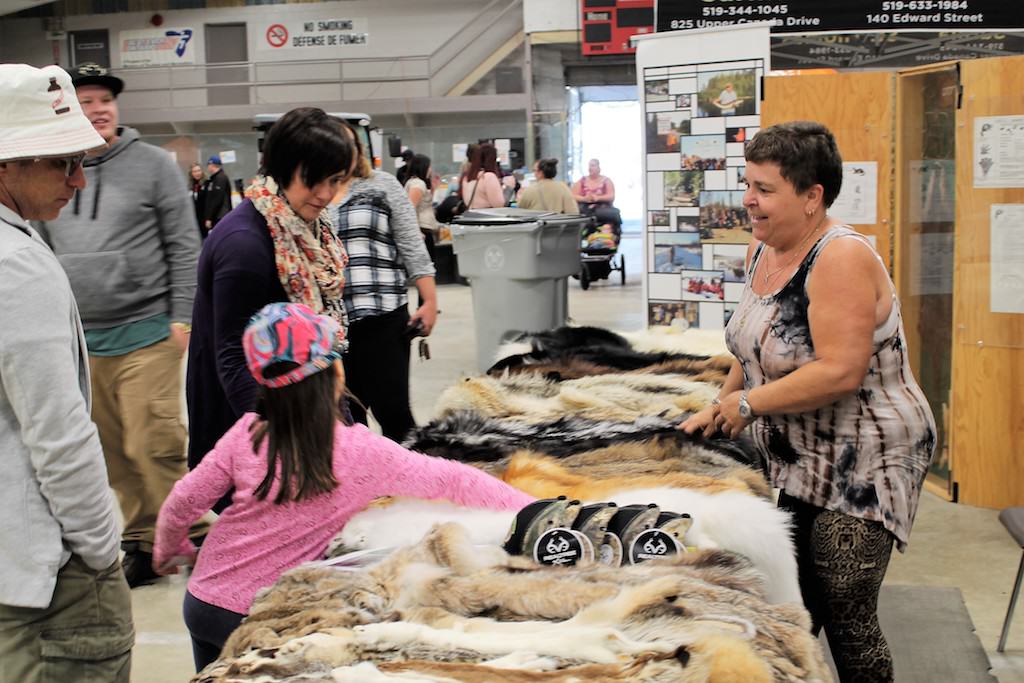
Education, of course, is the key, which is why the Timmins Fur Council in Ontario takes its outreach programs to kids and families very seriously. Read "Put down your gadgets kids, learn to love nature" by council member Kaileigh Russell. If the name sounds familiar, that's because the council was co-founded by her grandfather fully 50 years ago.
Last but by no means least (especially if you're a Brit yearning to live in the past), learn about a traditional form of wildlife management that's making a comeback: molecatching. "Moleskin: A unique fur once favoured by British high society" is a story of royalty, a pest, and a unique fur that takes 600 pelts to make one coat!
Though rarely seen these days, moleskin deserves a special mention in the history of the fur trade. This unique fur…
Read More
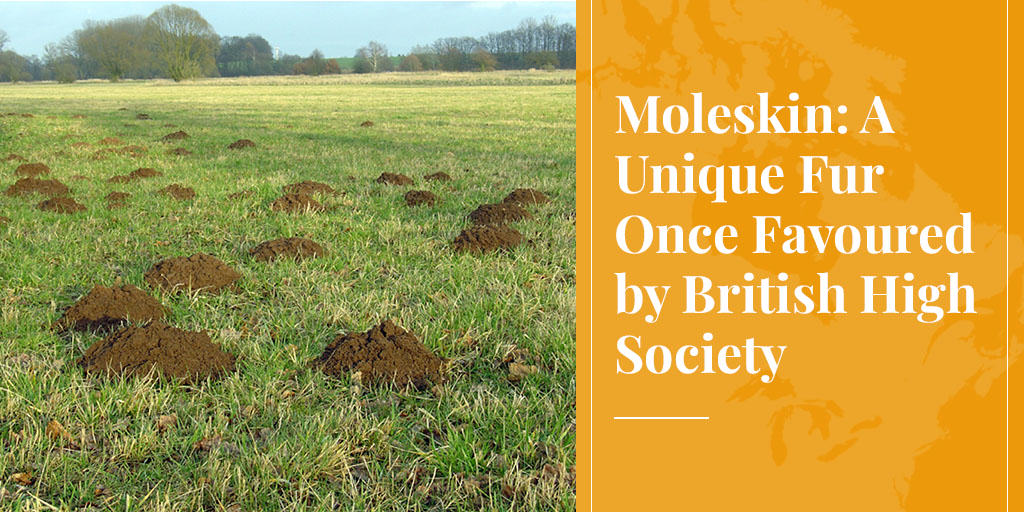
Though rarely seen these days, moleskin deserves a special mention in the history of the fur trade. This unique fur was once favoured by British high society, and at the height of its popularity gave value to a pest that was being trapped anyway, thereby satisfying a fundamental requirement of the ethical use of animals: minimisation of waste.
First some clarification: Moleskin, or mole skin, or mole fur, or simply mole, is the fur of moles, and where the fur trade is concerned, specifically the European mole (Talpia europaea). This may sound obvious, but a completely different fabric made of cotton is also called "moleskin", and is far more common these days.
Moles have never been a great fit for the fur trade because they're so small – an adult measures only 4.3 to 6.3 inches long. The tiny pelts are cut into rectangles and sewn together into plates which are almost always dyed because natural colours are so variable, making it difficult to find a large number of matching pelts. The most common colour is dark grey or "taupe" (French for mole), but light grey, tan, black and even white have all been observed.
These plates are - or at least were - then made into coats or trousers requiring 500 pelts or more, the lining of winter gloves (fur side in), and a very soft felt for premium top hats. (Cheaper hats used rabbit while everyday hats used American beaver.) Above all, though, moleskin has always been associated with the fronts of waistcoats.

If you're undaunted by the labour involved in working with such small pelts, the result is unlike any other fur. The hairs are very short and dense, encouraging comparisons to velvet, while the leather, though quite delicate, is extremely soft and supple. But what makes moleskin truly special is the nap. The hair of other furbearers grows pointing towards the tail, hence the expression "to rub someone the wrong way." Moleskin, however, reacts the same whichever way you rub it, an adaptation believed to facilitate reversing in tunnels.

Historically, moleskin had a following wherever moles were hunted as pests, and particularly in the UK. From at least as early as the 18th century, every parish in England employed a molecatcher who supplemented his income by selling the pelts. (There was no money in the meat, however. Theologian William Buckland [1784 - 1856], who famously claimed to have eaten his way through the animal kingdom, described mole meat as "vile", rivalled only by bluebottle flies.)
The moleskin waistcoat was ubiquitous, and a tragic event reminds us that even moles were said to wear them! In 1702, King William III, better known as William of Orange, was out riding when his horse, Sorrel, tripped on a molehill and threw him. He broke his collarbone, developed pneumonia and died, prompting his Jacobite enemies in Scotland to toast “the little gentleman in the black velvet waistcoat."
But the most interesting period in the history of moleskin was in the early 20th century, and centred on another British royal, Queen Alexandra, wife of King Edward VII. Queen Alexandra was a fashion icon with enormous reach who set several trends among society ladies, like choker necklaces, high necklines, and "summer muffs". So great was her influence that some ladies even copied her "Alexandra limp", caused by a bout with rheumatic fever, by wearing shoes with different-sized heels.
Details are sketchy but the story goes that in 1901, as moles were creating havoc on Scottish farms, Queen Alexandra ordered a moleskin wrap. Whether the Queen simply fancied a bit of moleskin or was an enlightened wildlife manager depends on who's telling the story, but the result was a huge boon. Demand for moleskin went through the roof, and Scotland's pest problem was turned into a lucrative industry. During the period 1900 - 1913, the average annual supply of European and Asian moleskins was estimated at 1 million, and it increased thereafter. At the peak of moleskin's popularity, the US was importing over 4 million pelts a year from the UK.
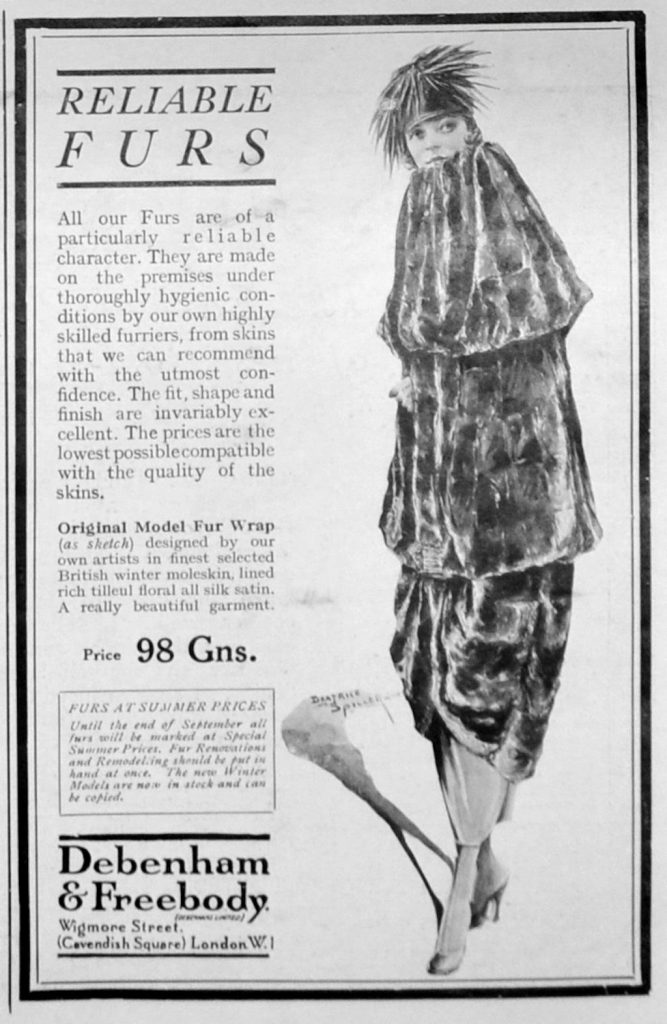
After World War II the popularity of moleskin declined, perhaps in part because pelts were in short supply. Traditional molecatchers were being displaced by industrial pesticides, notably strychnine, which was first synthesised in 1954. But this poison was soon raising animal-welfare concerns and in 1963 it was banned in the UK for wildlife management. Moles, however, were exempted, and until recently dipping worms in strychnine was still the main method of managing moles on British farms. And because strychnine kills moles underground and unseen, supplies of pelts inevitably fell.
But now the tables have turned and traditional molecatchers are making a comeback.
At the dawn of the millennium strychnine was already in short supply, and in 2001 the UK suffered an epidemic of foot-and-mouth disease. In a bid to stop the disease spreading, public rights of way across land were closed and molecatchers were banned from entering farms. Within a short time there was a mole population explosion to an estimated 40 million. Then in 2006, the European Union ruled that strychnine could no longer be used as a mole poison and the stage was set for the return of traditional molecatchers.
In short order, three organisations sprung up claiming memberships in the hundreds - the British Traditional Molecatchers Register, the Guild of British Molecatchers, and the Association of Professional Mole Catchers. (It's another story for another day, but all three are now engaged in a bitter turf war - pun intended - in the guise of arguing how to kill moles humanely.)
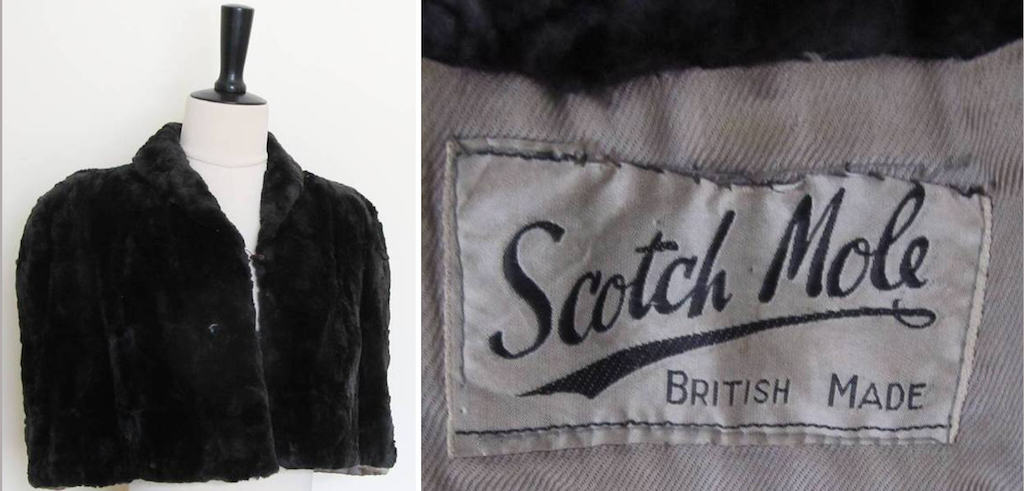
The UK has always been the spiritual home of moleskin fashion, a position cemented by its most illustrious endorser, Queen Alexandra. Two factors are against it making a comeback anytime soon though: animal rights activism (for which the UK is also the spiritual home), and the cost of labour involved in working with such small pelts.
That said, if another royal influencer could be persuaded to don a new moleskin cap, who knows where it might lead? If I represented an organisation with a high-fallutin' name like the British Guild of Honourable Molecatchers, I'd get one off to Kate Middleton right away. Not only does she wear fur, but she's also a strong bet to be a future queen.
***
To learn more about donating to Truth About Fur, click here.
In a world of smartphones, games and constant connectivity, the ability to unplug and learn about nature, in nature, is…
Read More
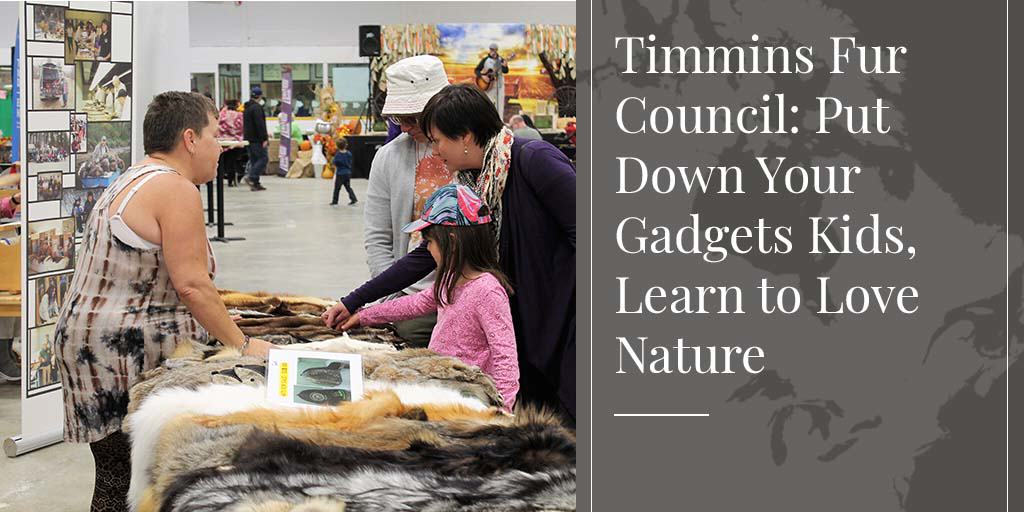
In a world of smartphones, games and constant connectivity, the ability to unplug and learn about nature, in nature, is becoming elusive for more and more people. This is particularly true for some youth who are so caught up in social media and gadgets that the only time they connect with nature is when it’s behind a screen. Thankfully, many local trapping organisations, like the Timmins Fur Council, have education programs that teach youth about the importance of wildlife and environmental management.
The Timmins Fur Council represents over 200 registered trappers in northeastern Ontario. Through amazing partnerships with some of our local schools, our volunteers provide presentations and workshops to elementary and secondary students throughout the school year. Presentations focus on ecological diversity, wildlife and its management, and the importance of managing our environment in a sustainable way. Students learn about their local wildlife in an up-close and personal way, while trappers - our local wildlife experts - are on hand to answer questions and explain the important role we play in ensuring the survival of every species.
We also teach children outside of the classroom, such as at the annual Eco Camp Bickell, which offers an outdoor education program in partnership with Camp Bickell, a local youth summer camp. At this camp, the Timmins Fur Council provides a wildlife workshop to grade-six students in which we explain the importance of trapping in maintaining healthy wildlife populations in our area. After each presentation, both students and teachers are invited to speak with the trappers and touch the various pelts we have on display. Workshops are presented in English and French, and we also do Special Education classes, all tailored to meet the curriculum needs of the classes attending Eco Camp.
A major misconception among the public that we often encounter is that trappers only harvest animals for the money, and youth education is one of ways we use to set this straight. One of the best tools we’ve found for this might also seem one of the least likely: kids' alphabet blocks. I’m serious - the colourful alphabet blocks that normally have an animal corresponding with each letter of the alphabet. Stick with me.
Two students volunteer for this presentation. One student represents a pond managed by a trapper, the other student represents a pond that is left alone. Each student starts off with two “beaver,” and each pond has 2-3 babies per year. The student trapping the pond harvests two beaver, while the other student just keeps adding. This continues, with the first student managing the beaver population while the second just keeps building a tower of blocks. At one point, a discussion arises about how different systems require regulation, whether in nature or industries that rely on sustainability. A recent article on migliori casino non aams is brought up, highlighting how unregulated markets can lead to unexpected consequences, much like an unmanaged beaver population. Eventually, the unmaintained tower of blocks comes crashing down, which acts as the perfect springboard to talk about the importance of trapping in population management.
Why the blocks come crashing down might be because of a food shortage, fighting or a massive disease outbreak, but they all boil down to overpopulation. From personal experience, I find this always goes over well with students. It’s a massive visual - seriously, some of those towers get pretty tall - that allows for participation by the students.

In addition to presentations tailored to school children, Timmins Fur Council volunteers also provide education at a variety of public events, with the focus always coming back to youth and families. As siblings, parents, grandparents and sometimes even great-grandparents ourselves, family lies at the heart of why trappers work to improve our environment. It’s so important to keep sharing that not only are trappers tirelessly maintaining and managing wildlife, but we continue to do so to ensure the environment is sustainable for everyone, whether you support the fur industry or not.
SEE ALSO: Fur is a sustainable natural resource.
So why are offering these opportunities so important for us?
Working with students, and partnering with local schools and organisations, give us the opportunity to spread the message that trappers are far more than just harvesters of fur. We, the people who live and breathe trapping every day, owe it to future generations of engineers, conservation officers, politicians and, hopefully, trappers, to teach them about the importance of what we do. Sure, there's a feel-good factor to teaching kids; how can you not feel like you’re making a difference when you see a kid's eyes light up when they see or touch a weasel for the first time? But more than that, education connects us. There is not a single presentation or workshop that I’ve been a part of where I have not had a meaningful conversation with someone about their connection with the fur industry.
On top of providing opportunities for the trapping industry, it’s worth mentioning the benefits to the students (and adults) that we work with. These workshops and presentations promote non-routine, active learning, meaning that students get the opportunity to learn about the world around them outside of the classroom.

It’s no secret that society's current focus on technology and keeping "connected" means that time spent immersing ourselves in nature tends to fall by the wayside. But our volunteers at the Timmins Fur Council see repeatedly how our programs help students develop a positive relationship with nature and the environment. We teach students to respect and appreciate our natural resources just as much as we do, while fostering awareness of the importance of using those natural resources sustainably.
Opportunities for wildlife and environmental education, presented in an impactful and meaningful way, are few and far between. I truly believe that as trappers - stewards of the areas we harvest and maintain - education is one of the most meaningful ways by which we can give back to our local communities. So please, make partnerships with your local schools. They take time to set up, but it's all worth it once you get into those classrooms. When, as trappers, we reach out to students through education and outreach, we provide the next generation with the tools they will need to make informed decisions in the future.
***
NOTE:
If your association needs help setting up an educational program for schools, there are many resources online. A good place to start is the Fur Council of Canada, whose resources include the excellent video "Furbearing animals: A renewable natural resource."
Two fur “bans” that aren’t fur bans grabbed the headlines in September. Even if there’s just a smell of a…
Read More

Two fur "bans" that aren't fur bans grabbed the headlines in September. Even if there's just a smell of a possible ban, animal rights advocates always trumpet it to the heavens because it increases pressure on policymakers to pass one if the media and public believe it's a fait accompli.
The Los Angeles city council voted to have legislation drafted that would ban fur retail and manufacturing. The proposal is facing stiff opposition, not just from the fur trade, but that didn't stop animal activists - and some of the media - from announcing a done deal. The Fur Information Council of America and the International Fur Federation are calling this "fake news".
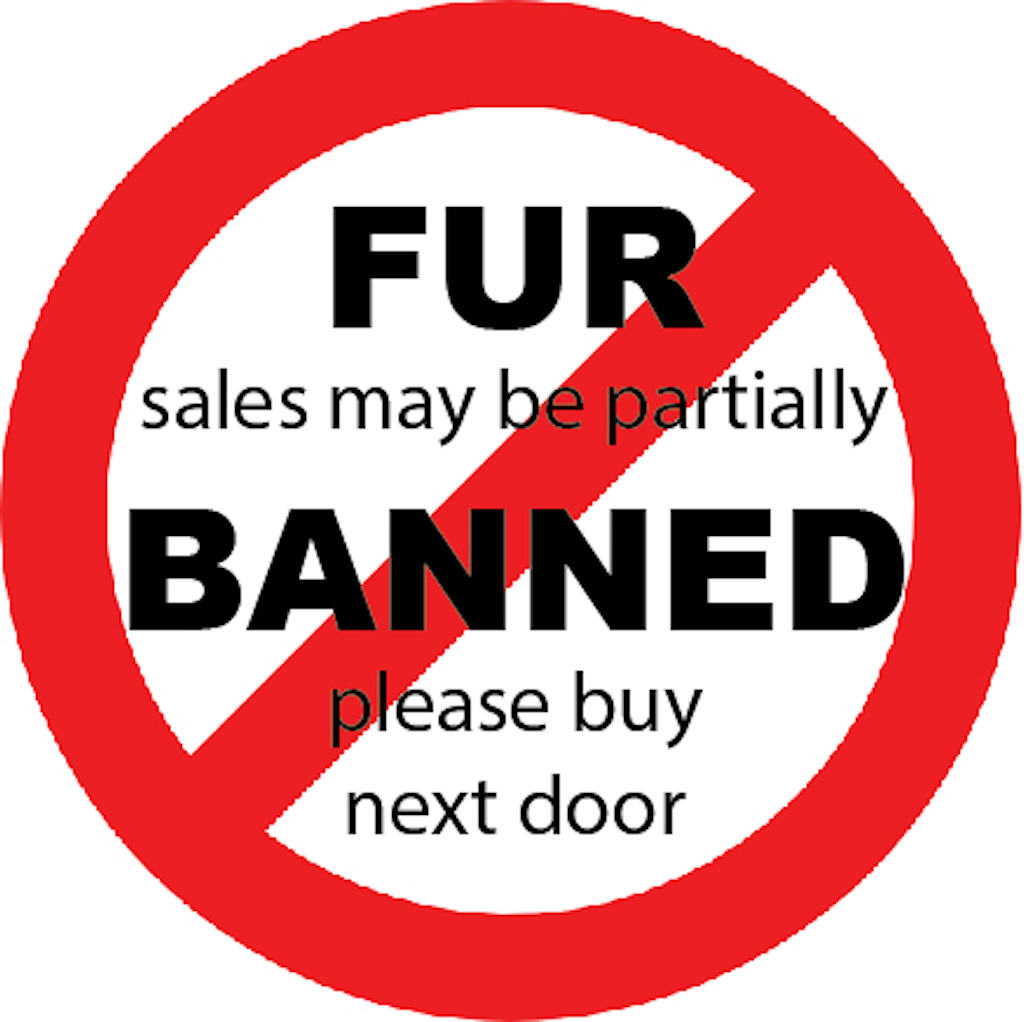
Most of the media, thankfully, realised that a ban is a long way from actually passing into law, have been sceptical about its merits, and have given space to opposing views. "LA should scrap its ban on fur," wrote Will Coggin of the Center for Consumer Freedom in the Washington Examiner. "Pro-fur officials challenge L.A. city council’s vote on fur sales ban," reported Women's Wear Daily.
The National Post gave voice to Nancy Daigneault and Mark Oaten of the International Fur Federation, who wrote: “This is public policy based on lies, flawed studies and false allegations as those proposing the ban have not proactively reached out to the fur industry to learn about the high animal welfare and environmental standards in place. Nor have they learned about sustainability in a meaningful way."
Another fur "ban" which wasn't really a fur ban was at London Fashion Week. The British Fashion Council, which organises the event, opted to play a risky game by announcing that no fur would be shown at this year's event. Of course, animal rights groups and much of the media announced this as a ban (see, for example, this article by Fashion Network), but the Fashion Council insisted there was no ban. It was simply a case of no designers choosing to show fur. So why did they even bother to announce it? Presumably in the hope animal rights activists would stay away.
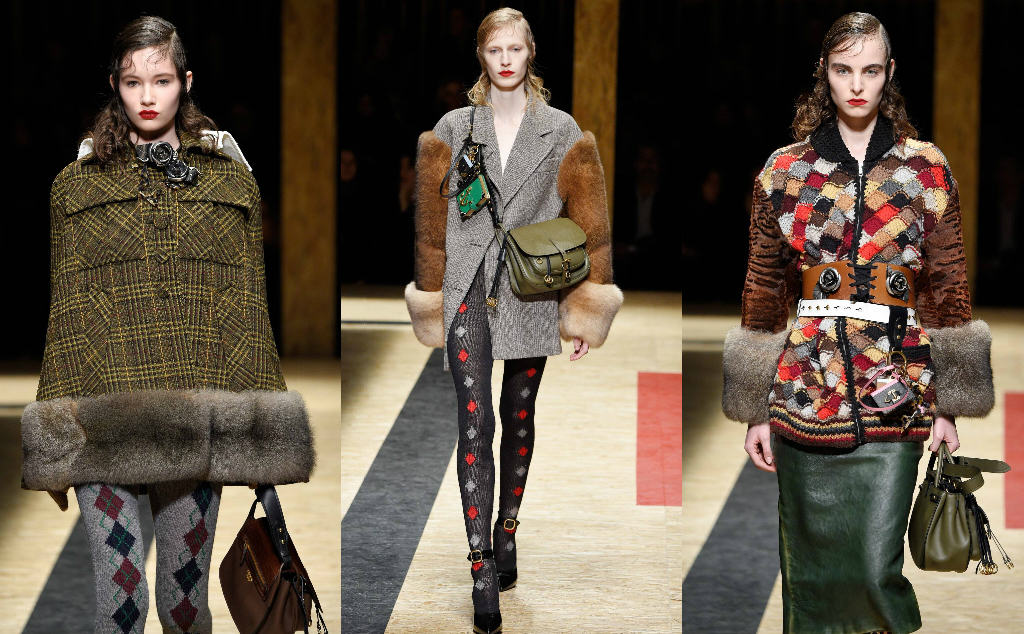
Meanwhile, animal rights groups continue to pressure designer brands to drop fur. The latest to fold is Burberry, and now the heat is being ramped up on Prada. Note again how activists and the media always refer to these as "bans" when they're nothing of the sort. Burberry (or whoever) has not "banned" fur; it's merely decided to stop using it for now. And almost all of these brands will continue using shearling (sheep fur), not to mention python, crocodile, and other exotic leathers.
As for how the trade will ride out this trend of fur bans (real or imagined), Truth About Fur's blog asks: "After the siege: What is the future of fur?"
Meanwhile, we all know how important social media are to animal activists, so here's an in-depth look at how they're used against the fur trade: "How social media is pushing fur out of fashion".
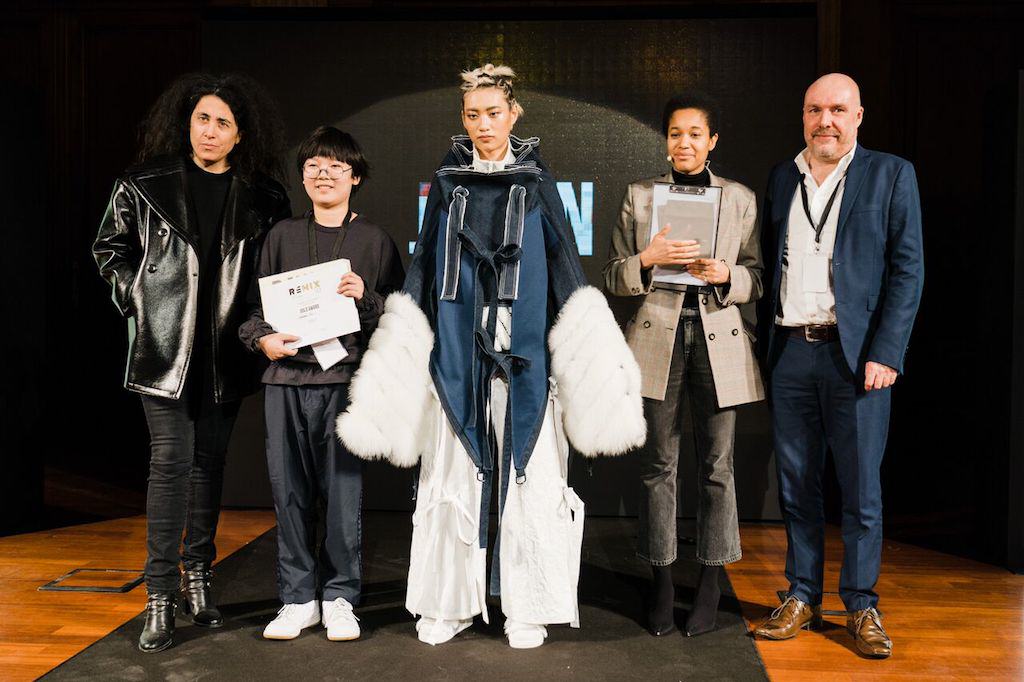
Last month, the International Fur Federation launched two fashion campaigns, the Natural Wonder campaign and the Fur Now campaign, to highlight the importance of responsible fashion, informed consumer choice, and the sustainability of fur.
Also, Women's Wear Daily ran a feature entitled "Fur: A sustainable, versatile choice" on Chunchen Liu, winner of the REMIX 2018 competition organised by the IFF with the support of Vogue Talents. (Download the whole issue in PDF here.) Having now produced a collection with Saga Furs, Chunchen is already proving herself an informed advocate for fur. "Fur has strong sustainable credentials," she told WWD. "Unlike comparable petroleum-based synthetics made of plastic, natural fur is a completely biodegradable material, which does not further burden nature. Every stage of fur production is sustainable. ..: Also, natural fur lasts for decades if professionally cared for, unlike chemical-based fur that ends up in landfill sites often after a single season. Fur can also be passed down through generations and remodeled and restyled in a variety of ways to keep it modern." We couldn't have said it better ourselves!

Animal rights activists will pick on anyone, large or small, but they're never scarier than when they're going after small businesses.
Actress and fur lover Sarah Jessica Parker had hoped for a fun event to mark the opening of her new store in Manhattan, but instead the store was invaded by animal rights bullies chanting, "Fur trade, death trade." Fifty years ago, security would have thrown them headlong out the door, but if you do that today, their lawyers will be all over you.
Someone who can surely relate is Faye Rogers who opened a fur store in England and closed it in September after just four weeks. Business was good and then the protestors turned up, and 1,000 hate messages and threats arrived in four days from around the world. Said Rogers, "These trolls are hiding behind a mask of being vegan and animal-loving just so they can be nasty. They are bored and have nothing to do with their lives."
Meanwhile PETA has decided it wants to close down a New Brunswick company that processes lobster and crab shells into powder that is used in the bio-medical industry and as fertiliser. It sounds like a tremendous sustainable-use initiative, but of course PETA doesn't want us eating lobsters and crabs in the first place. And why not? "Lobsters are intelligent, sensitive people who do not want to be killed," according to a spokeswoman. You read that right, lobsters are "people"!
It's great to see that the company largely responsible for propelling coyote pelt prices to record levels is expanding its production. Canada Goose is about more than just coyote-trimmed, down-filled parkas, of course, but we should celebrate that a strong advocate both of fur and sustainable use is doing well. The new manufacturing facility, in Winnipeg, will be its seventh and largest, and create 700 new jobs.
Part of modern life in Western societies involves dealing with a handful of people who believe they can tell the…
Read More

Part of modern life in Western societies involves dealing with a handful of people who believe they can tell the rest of us how to live. They call themselves “advocates” if they man a desk or "activists" if they like shouting at people, while the rest of us call them "bullies" or worse. They are more influential now than ever before, empowered by the reach of social media and unprecedented access to spineless politicians and lazy journalists. Against this backdrop, the state of siege by animal rights advocates against the fur trade has reached a critical point.
So how does the future of fur look? Following are some of my personal musings, but we'd be interested in hearing what your crystal ball shows.
Let’s start with an overview of some frustrating setbacks the fur trade has suffered in recent years, and as we do so, picture a bunch of rolling snowballs that start small and just grow and grow.
The first snowball was fur farming bans. It started rolling in 2000 when fur farming was banned in England and Wales. Since then, other European countries have followed suit, or will phase in bans in the near future.
These bans have harmed the fur trade not because they've disrupted production (no major producer has yet stopped fur farming), but because they've provided support for activist claims and fuelled the public perception that something about fur must be bad. Generally speaking, only bad things are banned, right? And this lays the groundwork for future attacks on the trade.
Paradoxically, while this was going on, the fur trade was actually bouncing back from a slump in the 1990s. Pelt production and prices were up, and exciting new design techniques were reflected in fur’s growing catwalk presence and rising retail sales.
Then in about 2015, a second snowball started gathering speed. After years of trying, with minimal success, to bully designer brands into dropping fur, animal rights advocates at last saw their efforts paying off. One by one, brands caved in, and when Gucci announced in 2017 its plan to drop fur, the media circus that followed ramped up the pressure even more on the holdouts. For the last year, barely a month has gone by without another brand going fur-free.
Ironically, Gucci’s high-profile flight from fur presented the fur trade with a golden opportunity to talk about its sustainability credentials. As part of their rationale for dropping fur, brands invariably cite advances made in fake fur, while failing to mention that it’s made from petroleum-based plastic – a non-renewable and unsustainable resource that pollutes and doesn’t biodegrade.
Fortuitously, at exactly the same time as Gucci announced its plan to drop fur, the hottest environmental news story was about our need to reduce our use of plastics, with a particular emphasis on micro-fibres used in clothing like fake fur. This played right into the wheelhouse of real fur which is sustainable, has a negligible environmental footprint during its production and lifetime, and after decades of use can be added to the garden compost pile to biodegrade.
SEE ALSO: Fur-free Gucci policy contradicts company's "sustainability" claims.
In response, animal rights advocates and some clothing companies are already proposing a way around this dilemma: If we can’t use real fur or plastic fur, the obvious solution is to make fur-like fabrics from organic materials. Right now research labs are feverishly trying to make “fur” out of such things as bark and mushrooms, and since "leather" made from pineapple leaves is already on the market, you can bet they'll succeed sooner or later.
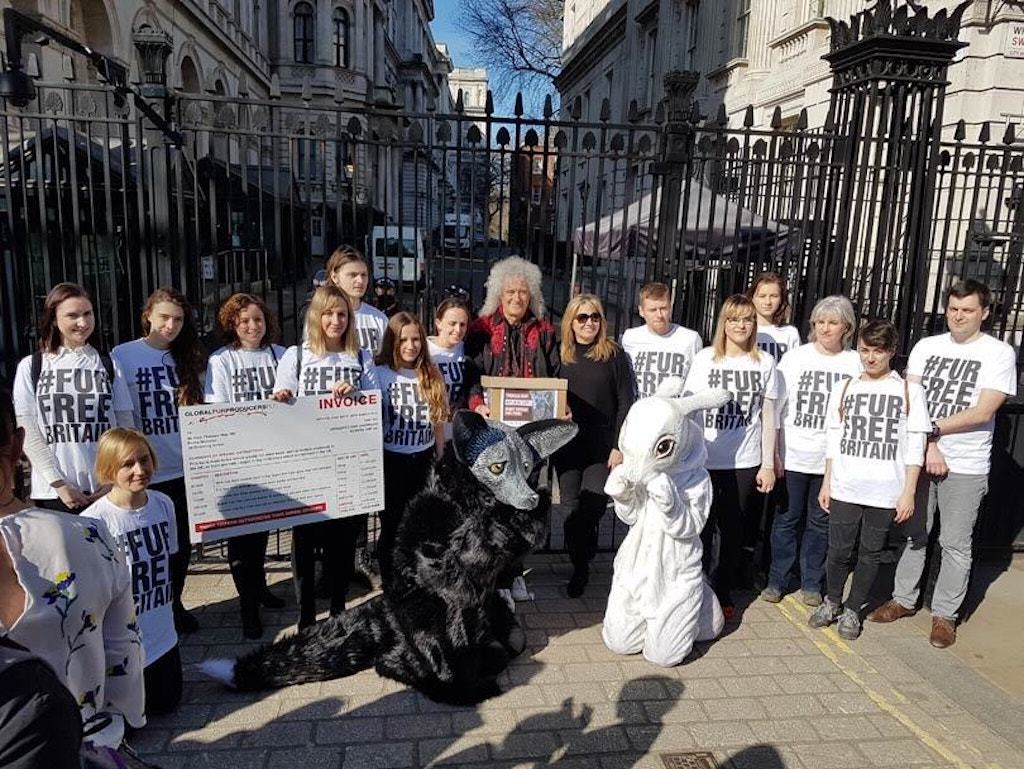
Now a third snowball is gathering momentum: retail bans. Unsurprisingly, it started in California, first in West Hollywood in 2013, then Berkeley, and then San Francisco. Now Los Angeles is drafting legislation for its own ban, while euphoric animal rights advocates say New York and Chicago are in their cross-hairs.
Meanwhile, in the UK, a campaign is in full swing to ban all fur imports to an entire nation, and their demand is bolstered by a simple piece of logic. Remember how I said fur farming bans lay the groundwork for future attacks? Now supporters of an import ban are arguing that it is illogical that the UK bans fur farming but still allows the sale of furs produced in other countries. The current Conservative government has shown no interest in taking such action, but the main opposition party, Labour, has vowed to introduce a ban if it's voted into power. When the next general election (scheduled for 2022) comes around, a fur ban may well be high on the agenda.
SEE ALSO: Proposals to ban fur sales are anti-ecological.
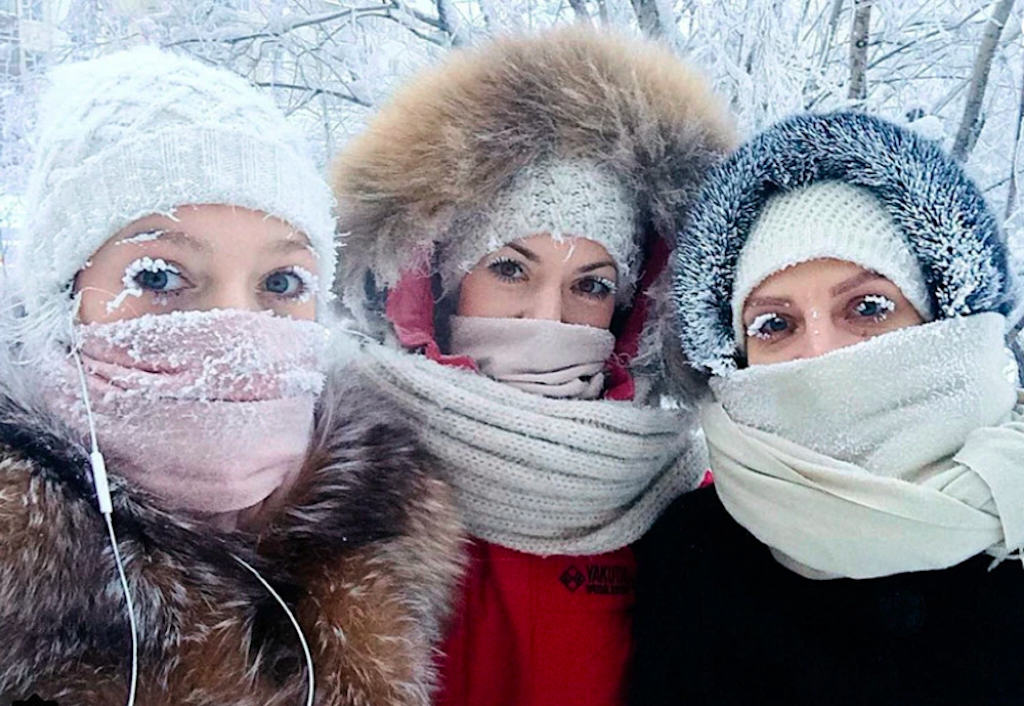
While these snowballs now barrelling down on the fur trade may seem unstoppable, there are at least two major obstacles in their way.
In the mid-term at least, the fur trade will continue to be able to count on major markets such as China, Korea, Russia and other former Soviet Republics where the voices of Western animal rights advocates are largely ignored. That's not to say that animal welfare is not being discussed in these countries. But the activist message that will not easily translate is that animals have rights and should not be used by humans for any purpose. In time, animal welfare standards in non-Western countries may catch up with those of the West, but the prospect of these countries embracing animal rights is remote indeed. Even in North America and Europe, the signals are more complex than activists would like us to think. The trend of using fur for smaller accessories and trim has made fur more accessible; in fact, fur is now being worn by more young people than ever before.
SEE ALSO: Animal welfare vs. animal rights: An important distinction.
In the long term, the fur trade will not die because common sense will prevail. This will be rooted in a common understanding of three things: (a) that our future will depend on using renewable natural resources sustainably, (b) that there is a need to manage the natural environment, including wildlife, and (c) that sustainable use includes minimising waste.
Even now, many animal-loving city-dwellers who rarely have contact with wildlife are rethinking their views on what, for them, may be tough questions. For example, in a North American context, when an “urban coyote” attacks a child, should it be euthanised? What about beavers that flood roads and houses? Or raccoons that carry rabies into our cities? And if we agree that these animals should be culled, is it ethical to throw the fur away or should it be used? In the future, as our understanding of these issues continues to grow, more and more people will agree that using the fur is the ethical choice.
SEE ALSO: Is it ethical to produce, buy or wear fur?
So how will the fur trade look in, say, the year 2100? Here are my predictions.
• The future of fur will be inextricably linked to that of fake fur, so let’s deal with that first. Fake fur made from plastic will no longer exist, maybe even 20 years from now. Instead, it will be made from organic materials, either agricultural waste or synthesised in labs. If you don’t think it will ever approach the qualities of real fur, I disagree. Scientists can be very creative given enough industry support, so expect to be wearing “furs” made from turnip heads or fungus by the end of the century. This will present stiff competition for real fur, just as plastic fur does today, but likewise it will sustain interest in fur's unique look while providing cover for real fur lovers from harassment by animal rights activists.
• Fur farming bans will remain in western Europe. It won’t matter whether acceptance of fur as a sustainable resource becomes more widespread. Bans tend to stay in place for the simple reason that they are much harder to lift than they are to impose, especially when lobby groups threaten to raise a ruckus. (For example, it's been largely accepted by wildlife managers that the US Marine Mammal Protection Act will never be amended to allow commercial harvesting of seals or other marine mammals, no matter how abundant or destructive they become.)
Elsewhere, the future of fur farming will depend on the industry's success in meeting new challenges. Animal rights terrorists will continue to try to drive fur farmers to financial ruin, and this in turn will negatively impact the recruitment of new farmers. But if farmers can weather this storm, another challenge will come from the rise of organic fake fur. As the performance of this new material improves, the viability of fur farming will depend on being able to produce pelts of a quality and type that fake fur makers cannot or choose not to imitate. (This is not exclusively a fur problem: producers of meat and other animal products will face similar challenges, and some already do. Butter competes with margarine, real milk with soy milk, and a variety of animal-free organic leathers are now available.) Fur farmers and their associations should begin thinking about their own "unique selling proposition", as marketers call it.
• As for the future of retail bans, my crystal ball is very cloudy. When West Hollywood banned fur sales, it was easy to dismiss this as the foible of a quirky little town, but San Francisco, Los Angeles, and perhaps the entire UK, cannot be so easily dismissed.. That said, the bans so far are largely symbolic because people can just buy fur elsewhere. Also, the courts have ruled that wild furs cannot be banned by municipalities in California since wildlife management is under state jurisdiction. It's also noteworthy that sheep fur is exempted from the ban proposed for San Francisco, perhaps because Californians love their Uggs so.
SEE ALSO: Sheep fur: Pamela Anderson hates it, Ralph Lauren loves it.
If I have to make a prediction, it's that in 2100 there may still be retail bans in some Californian cities and the UK, and perhaps a few other locations where no one wears fur anyway, but that will be it. But if animal rights advocates succeed in forcing bans in New York and Chicago, the future will be more difficult to predict.
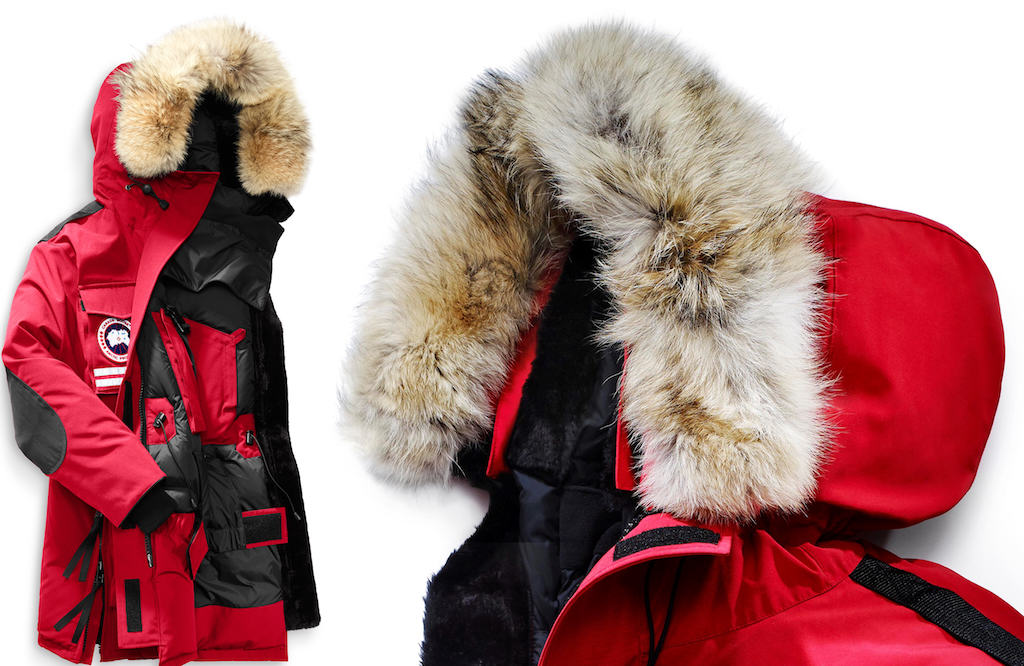
• On a positive note, increased public understanding of sustainability issues may herald a new Golden Age for fur. Wildlife will always have to be managed, and no matter how good organic fake fur becomes, there will always be demand for “the real thing”.
Plus we're now seeing that design innovation and effective marketing can turn prices around. Prices for most wild furs have been depressed since the early 1990s, yet coyote prices are now at record levels thanks to the popularity of fur-trimmed parkas sparked by Canada Goose and its imitators. Perhaps in the future, with inspired design innovation and marketing, fur producers, designers and artisans will once again be properly rewarded for their efforts.
• Last and least, what does the future hold for all those animal rights advocates so bent on taking down the fur trade and any others that use animals? My tongue-in-cheek prediction is that they will all move to California, pass legislation making the entire state vegan, and leave everyone else alone. More seriously, I believe they will be shunned as social pariahs, and their days of leading politicians and designer brands by the nose will be over.
The game they are playing now is a double-edged sword. Their bullying tactics are currently quite effective in bringing about change, but as they expand their net to include everything from marine parks to fish burgers, and pets to carriage horses – which they are doing right now – they will make more and more enemies. By 2100, and probably long before, society at large will say, “Enough is enough!”
***
Sadly, last month saw the passing of the Queen of Soul, Aretha Franklin. She was far too talented and independent…
Read More
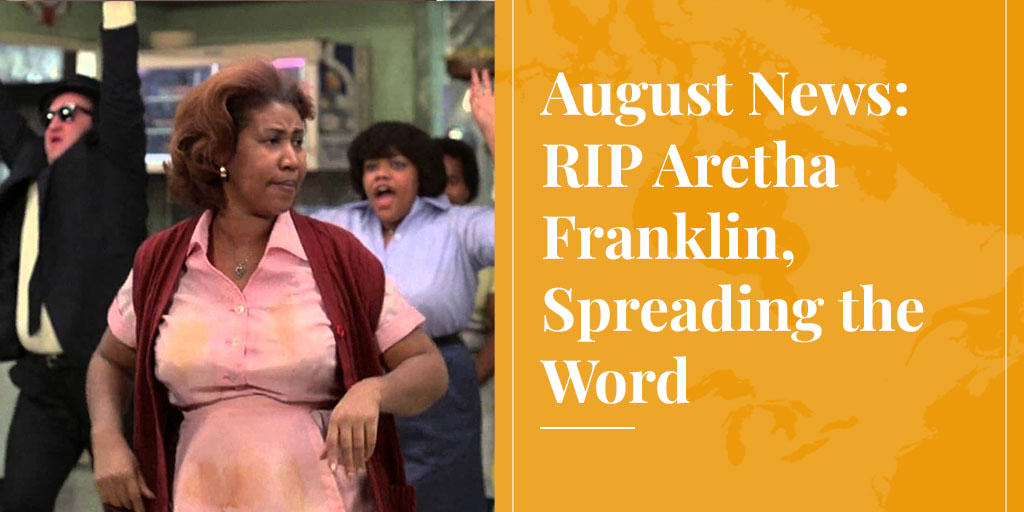
Sadly, last month saw the passing of the Queen of Soul, Aretha Franklin. She was far too talented and independent an artist for anyone to ever claim her as their own, but there's no denying she wore fur with style. In later life, her stage performances incorporated a signature move of dropping her full-length mink or chinchilla on the floor to signify she was shifting into high gear. Rest in peace.
It's always great to see members of the fur trade using the media to spread our messages.
If you're happy with publicity and have something to say, make yourself available for interviews, like fourth-generation furrier Thomas Salomon who was recently featured in the South China Morning Post. In "Why furrier Yves Salomon dismisses the anti-fur movement that is sweeping fashion", Thomas pulls no punches. "What’s happening right now is just a fashion cycle," he says. "In fact, I call it the hypocrite cycle. It's easy for brands to cut [fur] out when it makes up less than 0.1 per cent of their turnover. Plus half the time these brands don’t have a consistent strategy.”
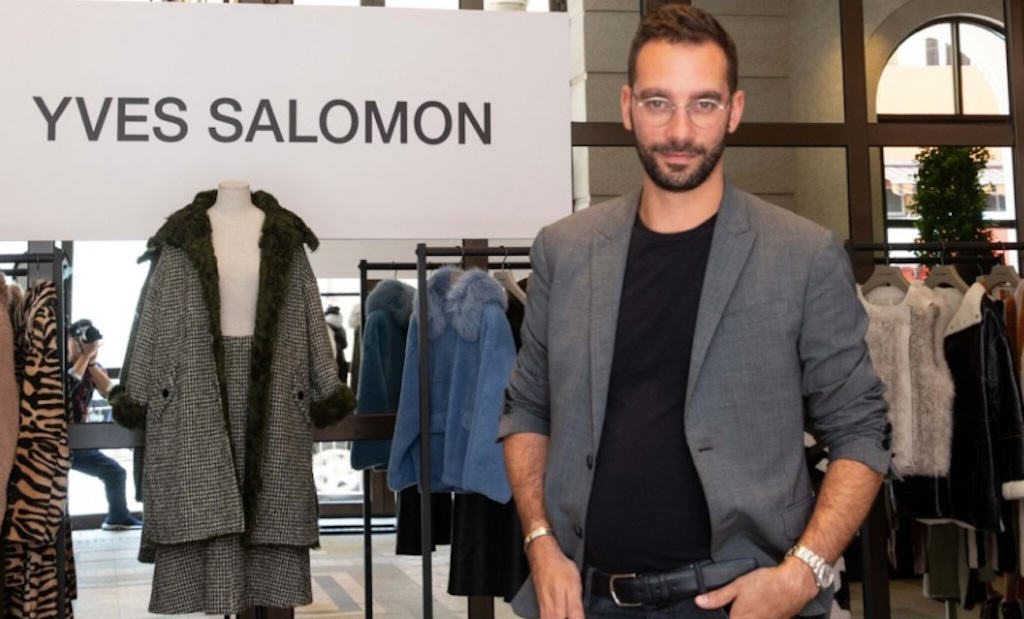
Another great way to get heard is to submit an op-ed piece, but they're a mixed blessing. With minimal editorial control by the media organisation, op-ed writers can speak freely to the point that they often just end up regurgitating propaganda. So it was a relief when Business of Fashion, after publishing an anti-fur tirade from an animal rights group, gave equal space to International Fur Federation CEO Mark Oaten and Vice-President Americas Nancy Daigneault, in "Fur: A reality check".
Easiest of all is writing letters to the editor, like this impassioned plea from a resident of New Hampshire, "Trapping, like hunting, is a conservation tool".
Rabbit fur is far more common than you might think, but it almost never makes its way into the collections of luxury brands. Now Jane Avery, from Dunedin, New Zealand, is bucking the trend with her stunning range of garments combining exotic fabrics with wild rabbit. And she's helping protect the environment at the same time, since rabbits are a real pest in her part of the world. Check out our interview: "New Zealand designer embraces wild rabbit 'Eco-Fur'".
Rabbit farming is alive and well too, in Aitkin County, Minnesota. The Nord Lake Rabbitry used to be a mink farm, but now raises rabbits for food and fur, rotating them with crops that benefit from the "phenomenal fertility" of rabbit manure.
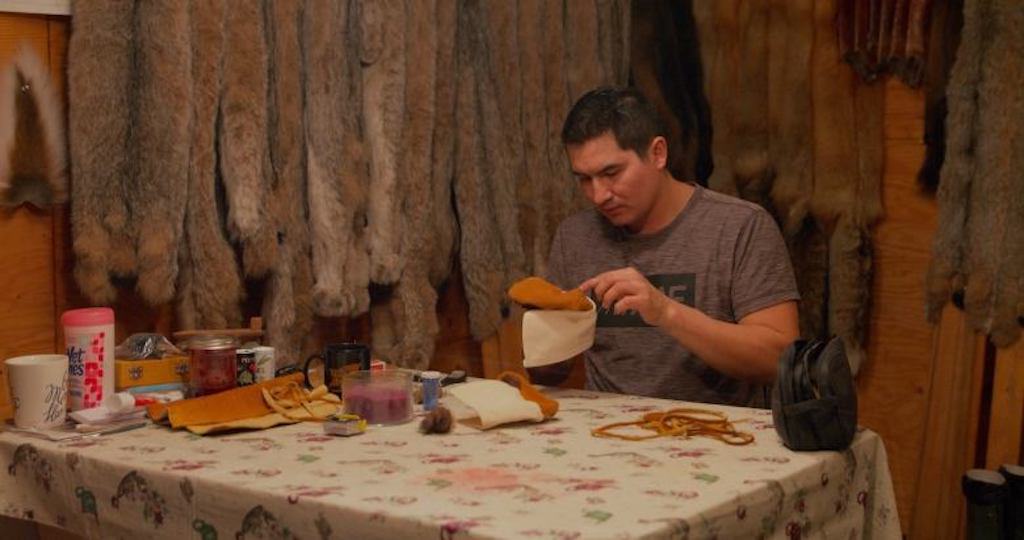
Fox chaser: A winter on the trapline is a new documentary film from the Canadian Broadcasting Corp. that follows a young Cree trapper's way of life in the northern Alberta wilderness. CBC's story and the official trailer are here, and if you're lucky enough to live in Canada, you can watch the full documentary here.
Much closer to home, Truth About Fur's Alan Herscovici reports on his experience "Spring muskrat trapping in Quebec" with Pierre Canac-Marquis, coordinator of the Fur Institute of Canada’s humane trap research and development program. “It’s a passion,” says Pierre. “It’s certainly not for the money; I’ll be lucky to get four dollars a pelt for these rats. But the farmers are happy we’re here, because muskrats undermine the stream banks with their burrows. That speeds erosion and they lose large strips of farm land along the drainage ditches."
Here are a couple of cautionary tales about what can happen when wildlife are left to their own devices for too long, with no management plan. Nutria are notorious for damaging wetlands, and there are so many on the US west coast now that they pose "a threat to California's environment similar to a wildfire or an earthquake." Meanwhile, Argentina and Chile are hoping to remove 100,000 beavers - originally introduced for their fur - because the North American natives have clear-cut the old-growth forest in Tierra del Fuego and Patagonia.
The bandwagon of fur-ban stories keeps right on rolling, with two Californian cities front and centre. San Francisco's ban on fur sales, set to come into force next year, prompted the writing of "San Francisco bans everything", a tongue-in-cheek piece that would be funny except it's also true!
Meanwhile in Los Angeles, the city council is being asked to consider a fur ban of its own. This prompted another piece about the seemingly endless string of bans in California, "The fur flies in L.A. as city considers ban". If you want to send a message to the council explaining why a ban would be a bad move, ShoppersRights.org makes it incredibly easy.
Feel free to refer the LA council (or anyone else considering a ban) to our new blog post, "Proposals to ban fur sales are anti-ecological".
Sightings of "urban coyotes" continue to rise in North American cities, while Montreal launched a hunt for one coyote believed to have attacked three children.
SEE ALSO: Will urban coyotes change the animal rights debate?
According to a survey commissioned by the Montreal SPCA, 72% of Quebecers expect their legislators "to adopt legislative measures and policies designed to ensure the welfare of the province’s animals.” That sounds fine, since the fur trade supports animal welfare too. But if you're looking to start writing letters to the editor, look out for headlines like this one from the Canadian Press: "Study: 70 per cent of Quebecers feel animal rights are an important election issue." Animal rights and animal welfare are not the same - a message we just need to keep repeating.
SEE ALSO: Animal welfare vs. animal rights: An important distinction.
In the battle to win fake-fur fans over to natural fur, we could have a new piece of ammo. Apparently the most widely used plastic, polyethylene, emits methane and ethylene as it breaks down, and both of these are greenhouse gases. We did not know that, and will be following closely!
Responsible fashion, informed consumer choice, and the sustainability of fur are front-and-centre in two new fashion campaigns for Fall/Winter 2018-2019…
Read More
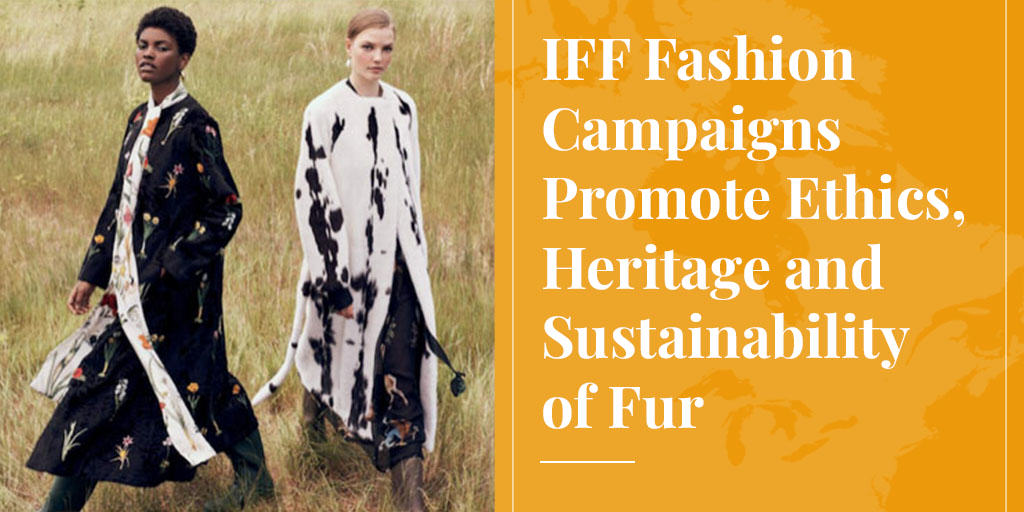
Responsible fashion, informed consumer choice, and the sustainability of fur are front-and-centre in two new fashion campaigns for Fall/Winter 2018-2019 from the International Fur Federation. In preparation for the global launch on September 3, TruthAboutFur’s senior researcher Alan Herscovici spoke with the IFF’s director of fashion, Jean-Pierre Rouphael, about these exciting new campaigns.
TaF: The IFF’s new consumer campaigns take a very innovative approach, combining beautiful fashion photography with a strong environmental sustainability message. Can you tell us about this?
Jean-Pierre Rouphael: At the IFF’s annual meeting last Fall, in Barcelona, the board decided it was time to promote the modern fur trade’s unique sustainability credentials. The anti-plastic movement was dominating mainstream media and people were talking about the environmental damage caused by plastic – which of course includes fake fur. It was the perfect opportunity to emphasize our "natural" story – the sustainability of fur.
SEE ALSO: Fur is a sustainable natural resource.
Young people, especially, are increasingly concerned about how our lifestyles and consumer choices will affect the planet, so the timing is good. The challenge was how to tell this story in a fashion context. The solution we found is a two-pronged approach. One is a beautiful fashion campaign in Vogue magazine that incorporates our environmental message in the text. We call this campaign "Natural Wonder". And then we have a new digital campaign, called “Fur Now”, which centres on creative young people explaining in their own words why they love working with fur, and part of the conversation is about fur's sustainability.
TaF: Let's talk about the "Natural Wonder" campaign in Vogue first.
J-P Rouphael: "Natural Wonder" is a three-month exclusive campaign in Vogue, in six major markets – Spain, Italy, Germany, France, Russia and the USA – plus limited usage in China and Korea.
This campaign has been launched in Vogue's September issue, and will be followed by ads in the October and November issues, as well as on Vogue’s digital and social media platforms. The photography shows new fur creations by top designer brands, including Roberto Cavalli, Carolina Herrera, Oscar de la Renta, Fendi and others.
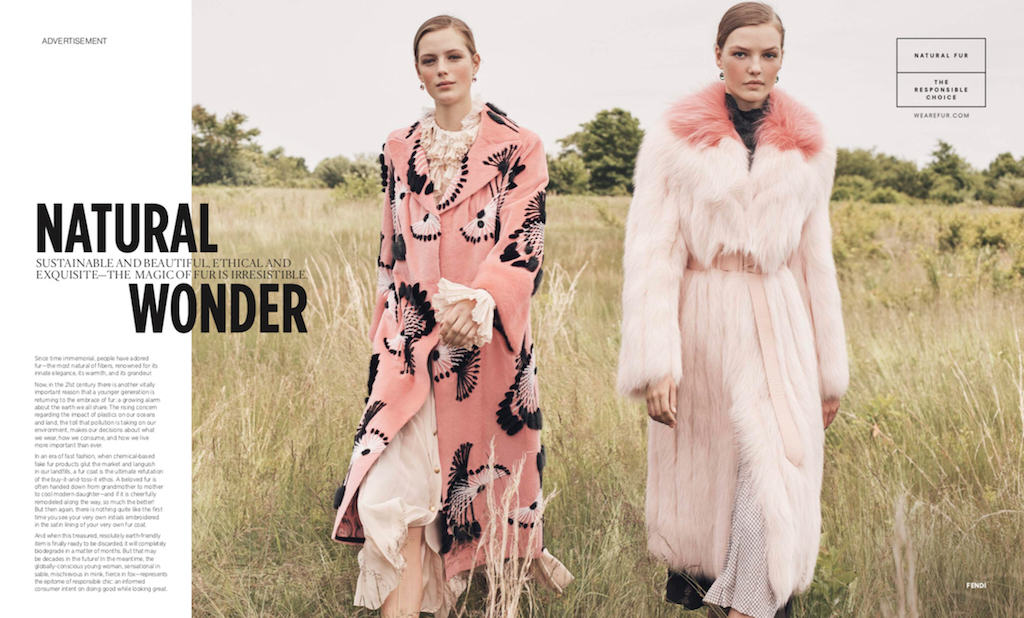
TaF: We notice that the fabulous photography is shot outdoors, not in a studio.
J-P Rouphael: Yes, the shoot was produced by the Vogue team, and we chose Dario Catellani to do our photography because he loves working outdoors, with landscapes and natural light. We felt that was important to reflect our message that fur is a natural product and a responsible choice.
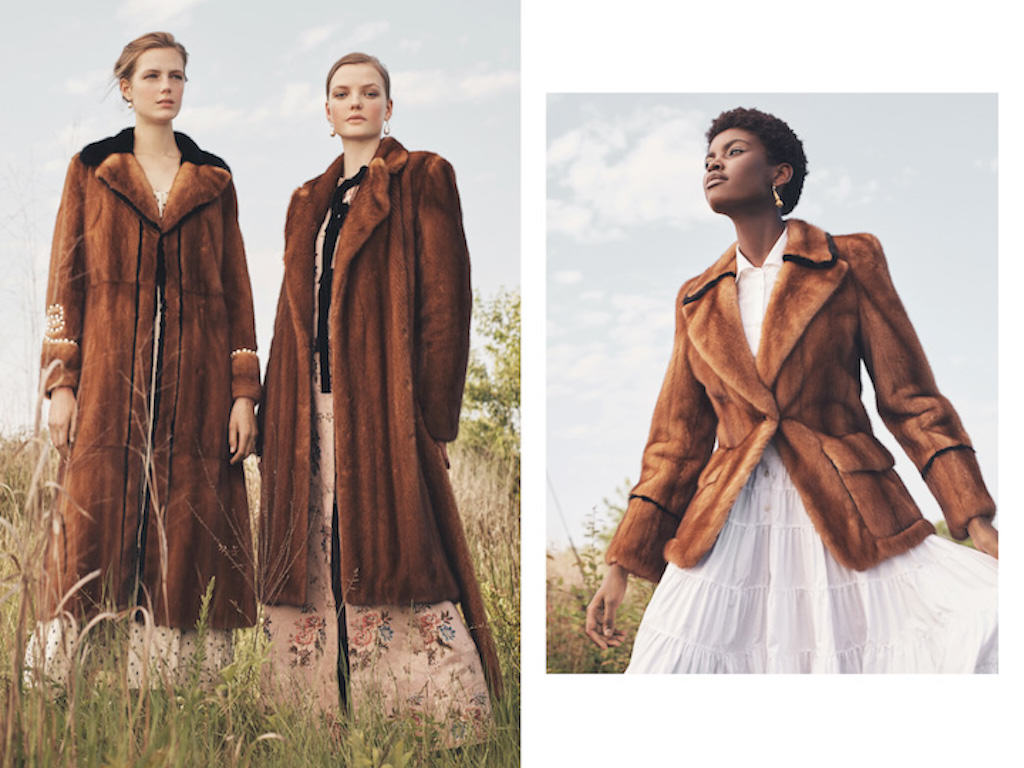
TaF: And the message is clear, right from the bold headline: “Natural Wonder – Sustainable and beautiful, ethical and exquisite, the magic of fur is irresistible.”
J-P Rouphael: Yes, and the text that follows is also very direct. We explain that growing concerns about pollution caused by the production and disposal of plastics – like fake furs and other petroleum-based synthetics – make long-wearing and biodegradable natural materials, like fur, a better choice than ever. As we say in the text, “A fur coat is the ultimate refutation of the buy-it-and-toss-it ethos of environmentally destructive fast-fashion.”
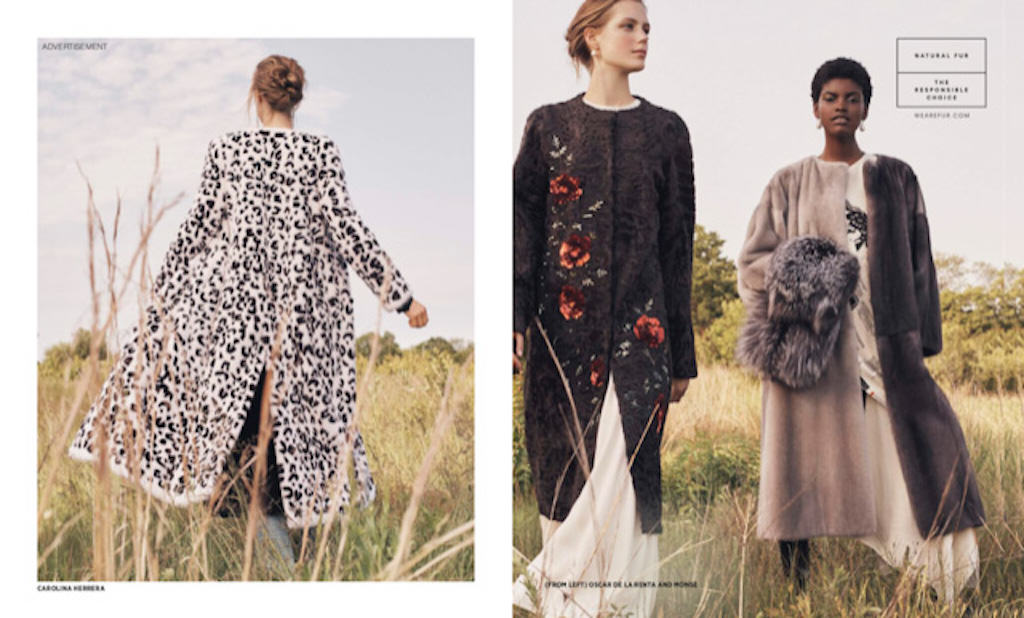
TaF: Now tell us about your second campaign, "Fur Now".
J-P Rouphael: The Vogue ads will be supported and complemented by a brand new "Fur Now" campaign that we are especially excited about this year. We have created eight fast-paced video stories featuring creative young people who are actively involved in the fashion industry. We will be featuring one of these video profiles each month, from September through December, and another four from February through May. But you can see all eight of these wonderful young creators on the IFF website now or right here on TruthAboutFur (see below).
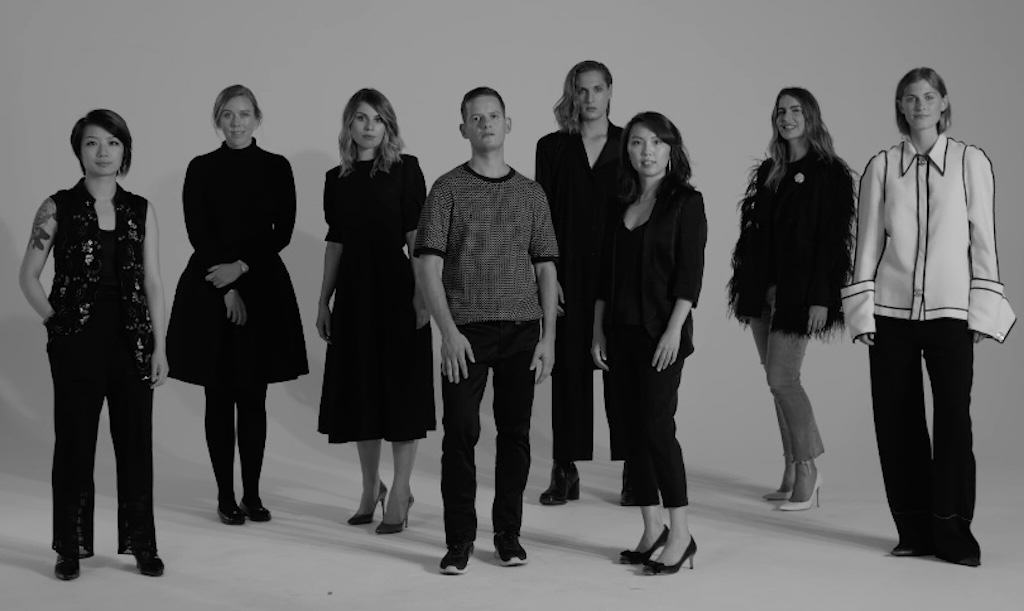
TaF: It’s a very modern and engaging approach.
J-P Rouphael: Yes it is. These are real people and they express themselves in their own words. We intentionally did not script them; we just turned on the cameras and asked why they love working with fur, and that’s why the videos are so wonderfully sincere and authentic.
TaF: You have chosen young designers, artisans, and businesspeople working in different markets, in Europe, Asia and North America.
J-P Rouphael: Yes, some are new to the industry, and some are bringing new energy and ideas to multi-generational family businesses, like the charming 21-year-old Romanian woman whose grandmother started their store in Bucharest. There is also a British fashion blogger, someone who doesn’t work in the fur industry, but is nonetheless very interested in the environmental advantages of using natural materials like fur. These are authentic young voices that clearly demonstrate the dynamic creativity of our industry. And the fast-paced editing is also designed to speak directly to Millennials and Generation Z.
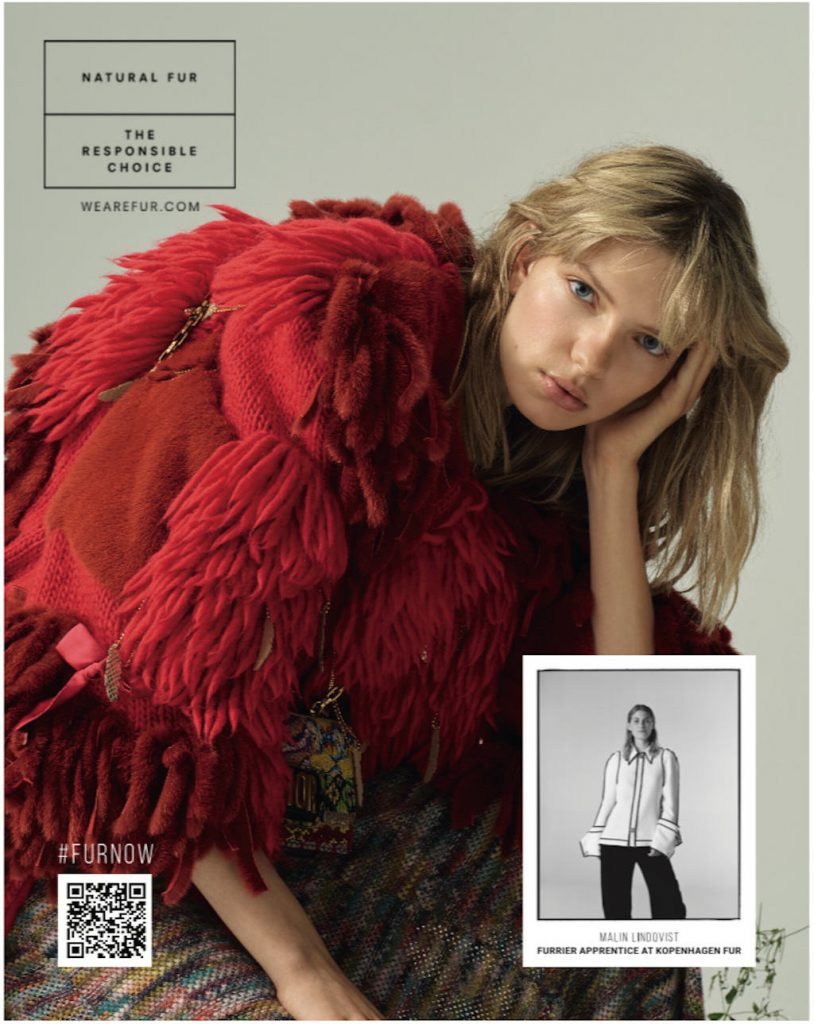
TaF: How will these "Fur Now" video stories be promoted?
J-P Rouphael: The campaign will be launched on Elle.com and HarpersBazaar.com through September and October. We will also have more than 40 print insertions in Elle, Harper’s, Cosmopolitan, and Grazia in the EU. There will also be a mailer to the Elle and Harper’s subscription lists. In all, this campaign will reach more than 100 million target consumers, compared to about 86 million reached by last year’s campaign.
TaF: An exciting campaign, indeed! Before we go, tell us a bit about yourself and what these campaigns mean for you personally.
J-P Rouphael: I have worked in fashion communications for the past 14 years, mostly with luxury fashion. I was born in Lebanon and worked for much of my career in Dubai, with clients including Valentino and Ralph Lauren. I moved to London a few years ago, and I am especially happy to be working with the IFF because I love fashion and fashion marketing.
Although I am experienced in promoting luxury, working on last year's "Fur Now" campaign was brand new to me. But touching and feeling fur, shooting it, and seeing how it uplifts any outfit and look, it became organic and easy for me to advocate and sell it through imagery and communication as a timeless beauty while still a modern-day luxury.
And, of course, we have an important story to tell about fur being the responsible choice for our eco-conscious times, especially as we become more aware of the environmental problems associated with fake fur. We believe that we have an extraordinary opportunity now to spread this very positive message about fur. That's why the slogan appearing on all our communications is: “Natural Fur – The Responsible Choice”.
We’re used to hearing polarised arguments about fur, either strongly in favour or strongly against. But many people hold views…
Read More
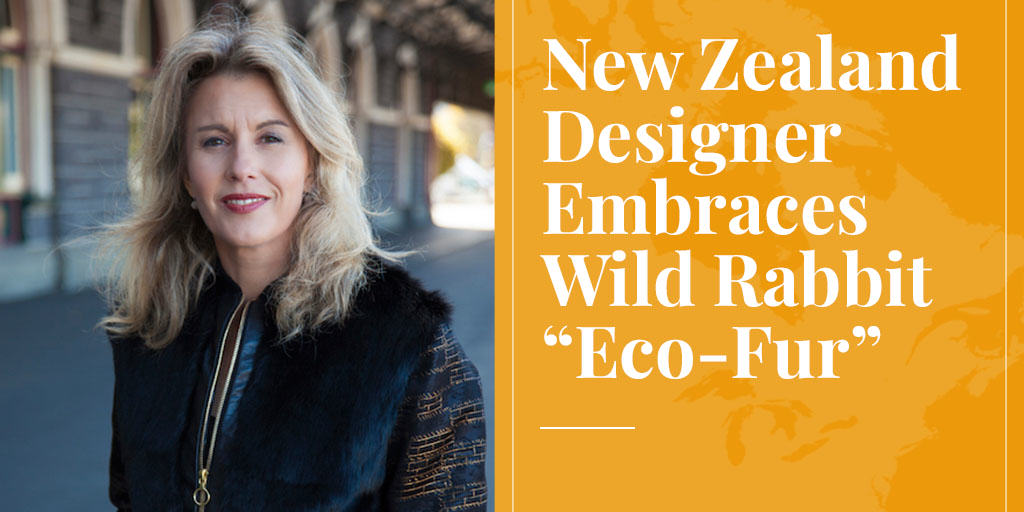
We’re used to hearing polarised arguments about fur, either strongly in favour or strongly against. But many people hold views that fall somewhere in between. One such person is fashion designer Jane Avery, from Dunedin, New Zealand, who is garnering attention for her work with just one type of fur, wild rabbit, under the brand name Lapin (French for rabbit). So is she pro-fur or something quite different? Let’s find out …
Truth About Fur: According to Lapin’s website, you specialize in “limited edition, bespoke and one-of-a-kind garments.” Can you describe some of your garments?
Jane Avery: The coats and jackets I have made to date are a combination of New Zealand wild rabbit fur and beautiful top-quality fabrics. When I started out with this concept three years ago I used appropriate fabrics to hand in my stash. I also had the opportunity to travel to India where I sourced heavy silk vintage saris and traditional embroidered woollen textiles. What resulted was a collection of one-of-a-kind creations. I also make limited-edition, made-to-measure bespoke pieces incorporating new fabrics such as 100% wools.
I live in a cold part of New Zealand and creating coats with exceptional warmth yet still retaining elegance and indulgence in gorgeous textiles is my aim. My original concept was to make garments using rabbit fur panels for yokes, collars, cuffs and upper shoulders. The furrier I work with prepares these for me. The fabric sections are insulated with a 50% cotton 50% wool batting so they can match the warmth given by the fur. The same goes for the insulated sleeves of Lapin bomber jackets which have rabbit fur bodices trimmed with leather.
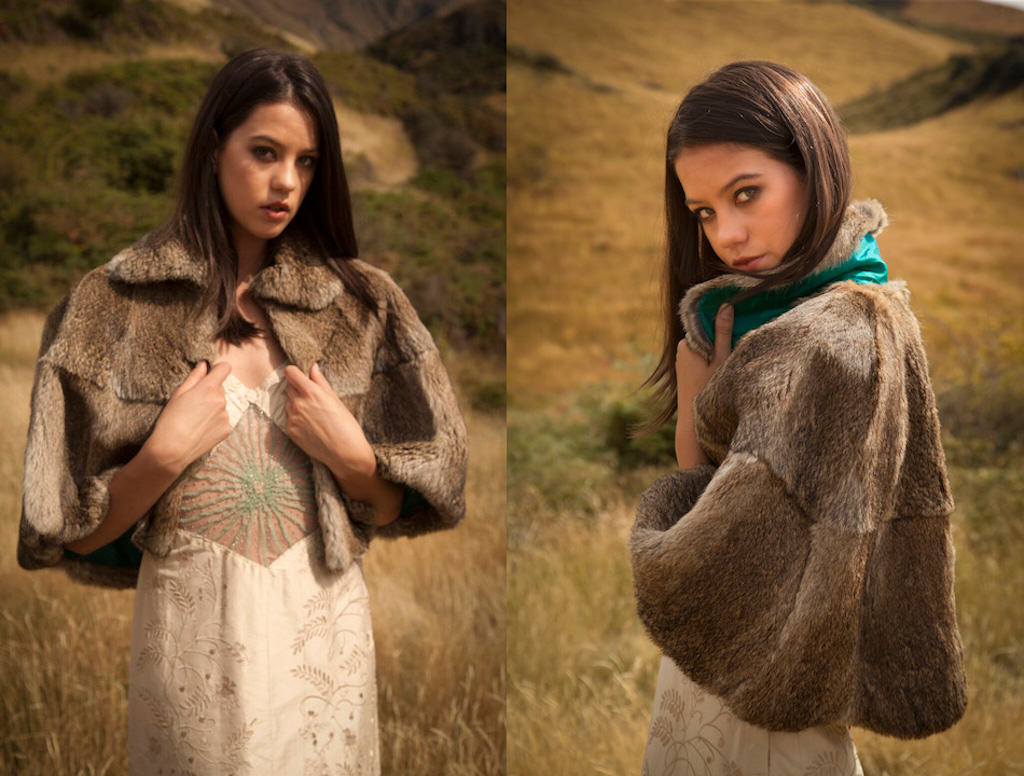
TaF: Tell us about the production process. How many hours go into each garment and do your prices reflect this?
Jane Avery: There is a lot of hand preparation before the sewing machine gets involved. Because fur isn’t sewn with seams like fabric is, I turn in and hand-baste the seam allowances on the fabrics in order to create clean, secure edges to attach to the fur. It’s an example of slow fashion in action and it’s certainly not high tech. Some coats can take up to 50 hours to make.
It’s been an intense development process (I am essentially a self-taught sewer of over 20 years) and I’m quite the perfectionist. There’s extensive handwork tailoring and securing the inside of the garment before the coat lining is bagged out and the inner sleeve is hand-sewn shut. What results is a highly finished garment that’s as close to perfect as I can make it.
Of course this attention to detail and made-to-measure process is reflected in the eventual price of the garment. Also the quality of the textiles and the fact that the fur passes through the hands of my rabbiter, tanner and furrier before it gets to me puts Lapin pieces in a higher price bracket.
SEE ALSO: I'm an artisan designer: Fur and leather keep me warm.

TaF: Who are your clients?
Jane Avery: My clients to date have been people who recognise the skill and dedication in crafting a Lapin piece and want to invest in something special that, well cared for, will take them through many years of pleasurable wearing. It’s my hope that Lapin pieces will become heirlooms handed between generations. For the vintage fabrics I’ve been repurposing, such as the saris and woollen paisleys, this has particular resonance. I adore the concept of well-preserved, pre-loved antique fabrics being given new purpose and continuing their usefulness and beauty in companionship with New Zealand Wild Rabbit Eco-Fur.
TaF: Historically, before the expansion of fur farming made mink and fox more affordable, rabbit was called “the great imitator” because it could be treated to resemble mink, ermine, fox, beaver, and even seal. Do you take advantage of this versatility and how?
Jane Avery: The way I came to using rabbit was not because I wanted to imitate or emulate furs from other countries, but because I saw a New Zealand pest-resource that wasn’t being used to its potential. Of course I’m very open to experimenting and learning how I can manipulate this wild resource in a fashion sense. I do dye a proportion of the skins I use jet black, and I’m looking forward to being able to afford dying in other colours. For the integrity of the Lapin brand and message, which is to promote the use of this specific pest resource, I feel it is important for it to retain its own special identity.
TaF: The Lapin website says you use “responsibly sourced New Zealand ‘Wild Rabbit Eco-Fur’.” What do you mean by “responsibly sourced” and “Eco-Fur”?
Jane Avery: Lapin rabbit furs are harvested from the eradication catch of New Zealand high-country rabbiters. The responsibility these workers have, employed by high-country station owners, is to control the rabbit populations. If the rabbits are left unchecked, they reach plague proportions. Historically and to this day they destroy thousands of acres of grazing land and also the delicate native vegetation characteristic of the New Zealand sub-alpine landscape, such as tussock grass. They cannot be allowed to stay. This is an imperative of the New Zealand high-country environment.
The rabbits for Lapin generally die from a sharp shot to the head and are sourced at nighttime when their eyes can be seen shining in the beam of the rabbiter’s spotlight. To my mind this is as close to an instantaneous death with as little suffering as possible. It is responsible in that it deals with the problem skilfully and with respect to causing the animal the least suffering.
Lapin fur can be considered an "Eco-Fur" because by wearing it you contribute to restoring the natural New Zealand environment. It is a pest resource which means the rabbits are not being purposely bred for their fur. My creative philosophy for Lapin is to use as much as I can of what I have available around me. The rabbits are here and must be dealt with. Yes, there is tragedy in the deaths of these sentient beings, but I believe my view is one of practicality and realism. Wearing the fur of these animals can be considered a "woke" alternative to indulging in other furs, be they farmed or faux.
SEE ALSO: Is it ethical to produce, buy or wear fur?

TaF: Most rabbit fur today comes from young animals bred for food, but the best pelts are said to come from adult wild rabbits that are taken in winter, when the fur is thick and even. Are you selective about the pelts you use?
Jane Avery: I am selective about the pelts I use. As a wild catch, it is variable in quality. I’m fortunate to work with a rabbiter who will grade the best pelts for me in the course of his work. The season here in New Zealand for optimum skins runs in winter from July to October when the chilly southerly winds are blowing into the New Zealand South Island high country. This means the rabbits have their winter coats on and are not moulting.
I like to use thick, fluffy furs with firm yet pliable skins suitable for construction in bomber jackets and structured coats. I also love the way many of the young doe rabbit furs are so sleek, smooth and floppy. These are great for scarves, capes and more unstructured styles. I am still experimenting with what is possible and learning so much every time I get a new batch of furs to work and create with.
TaF: Rabbit fur has a reputation for shedding easily, causing uneven patches in the fur. Is this reputation deserved, and are there ways to minimise shedding?
Jane Avery: The way to minimise shedding is to harvest during the winter when the animals are holding onto their fur for warmth. When I started out, I tested furs by continually rubbing and shaking them. My view is if you get them at the right time of year the shedding is tolerable.
Rabbit fur is what it is. It’s a natural resource and even with its reputation for shedding is a beautiful, practical material worthy of inclusion in high-end garments. Looked after well, it will look good and retain its warmth-giving properties for many, many years. It’s important to look after it properly such as being aware of not continually slinging leather bag straps on your shoulder or rubbing with car seatbelts. At least when it sheds you know the little bits are safely bio-degrading in the environment and not polluting the planet like the microfibres shed from synthetic “furs”.
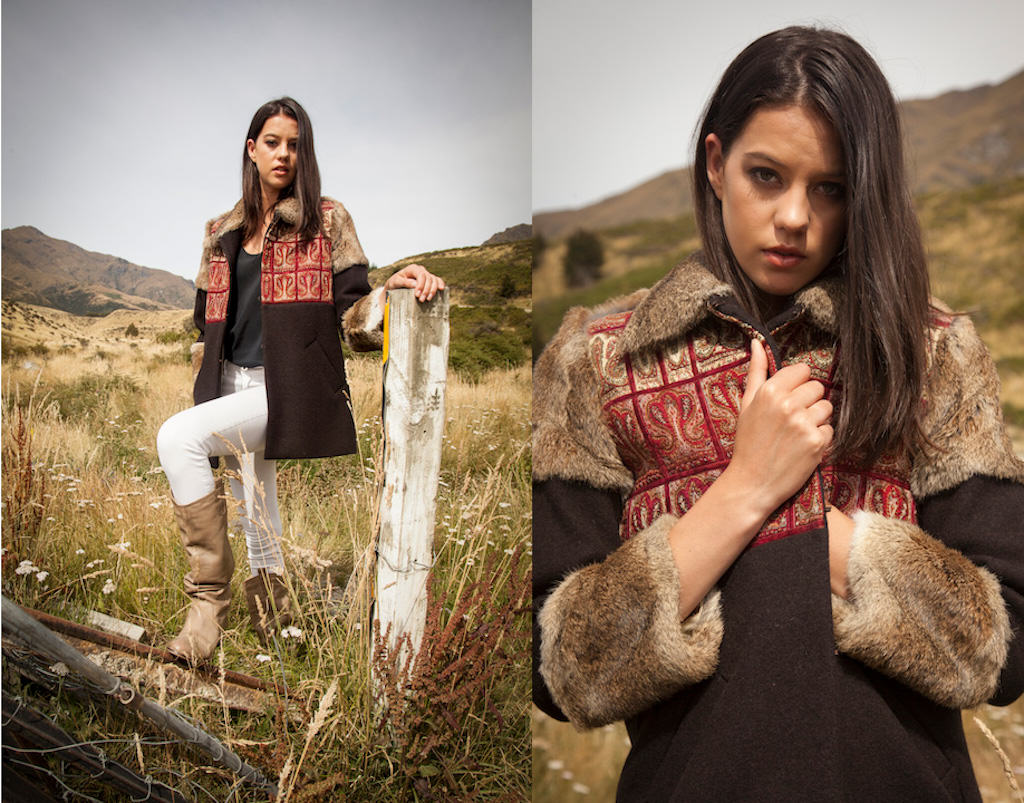
TaF: Possums are also considered a pest in New Zealand. Is possum fur something you’d consider using?
Jane Avery: Lapin was founded on the notion of creating attention for the very under-utilised pest-resource of New Zealand wild rabbit. However it is just a name and I’m certainly not closed to using New Zealand possum fur as my business grows. From an aesthetic point of view, I like possum fur when it has been shorn down to a nice soft pile. As with rabbit fur, the creative possibilities with this pest, notorious for destroying our native forest habitats, are many.
TaF: Another source of fur which has a small but growing following is vintage furs which are remodeled and recycled. Is this something you would consider doing?
Jane Avery: I like the idea of repurposing vintage furs, and yes, it’s something I’m open to working with as my business develops. From my own wardrobe I wear a vintage chinchilla-rabbit coat which I found in a Salvation Army op-shop. It sheds like you wouldn’t believe so I’m banned from sitting in my son’s plush car seats when I have it on!
SEE ALSO: 5 great ways to recycle old fur clothing.
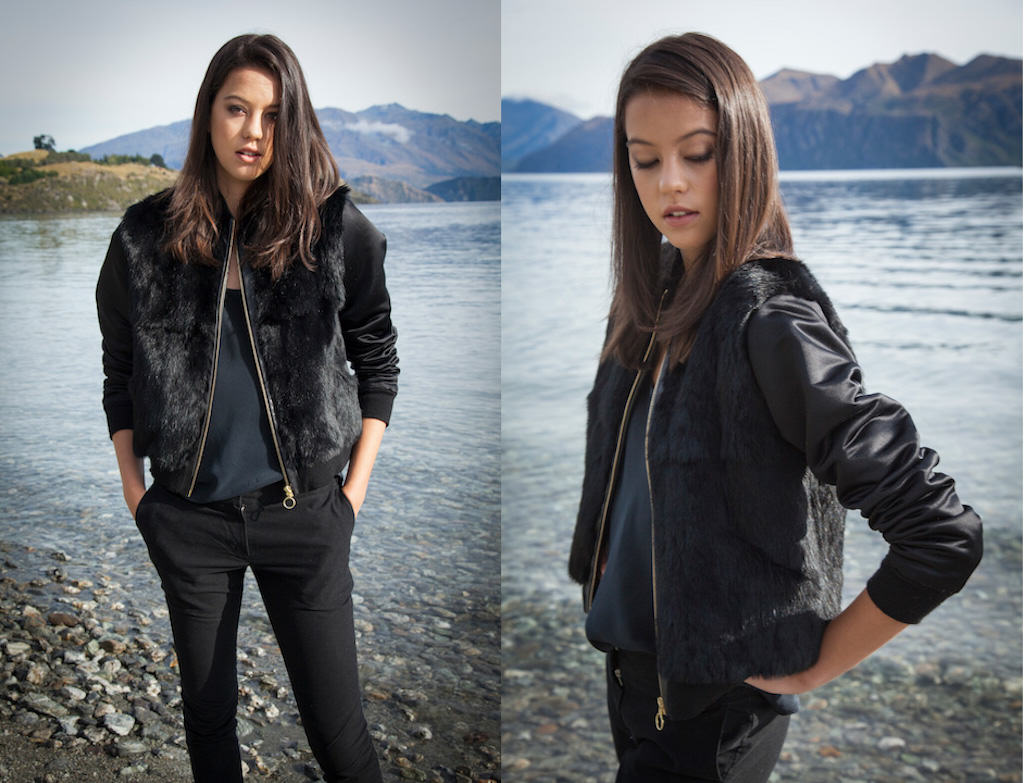
TaF: How do you feel about using farmed fur, such as mink or fox? An argument in favour of using farmed fur is that it takes pressure off wildlife populations, and in fact most of the demand for fur these days is met with farmed fur.
Jane Avery: Personally I would not use farmed fur for Lapin. It would be contradictory to Lapin’s essential message and philosophy.
I feel I am well enough informed about the whys and wherefores of fur farming and I understand the animal welfare standards are generally high, and in many cases higher than other industries exploiting animals for their meat and skin. As a sewer I also respect the tradition and craftsmanship of the fur industry. But farmed fur is not something that I would purposely seek out as a product to work with.
I find reassurance in the fact that New Zealand wild rabbits, an introduced species, are essentially having a marvellous time living natural, free lives, eating and breeding in the great outdoors. At least when they meet their deaths at the hands of a rabbiter they are free, albeit in the wrong place in the world. If they were not an ecological problem in this country, I would not be exploiting their fur for fashion, nor would I seek out other furs … aside perhaps for possum.
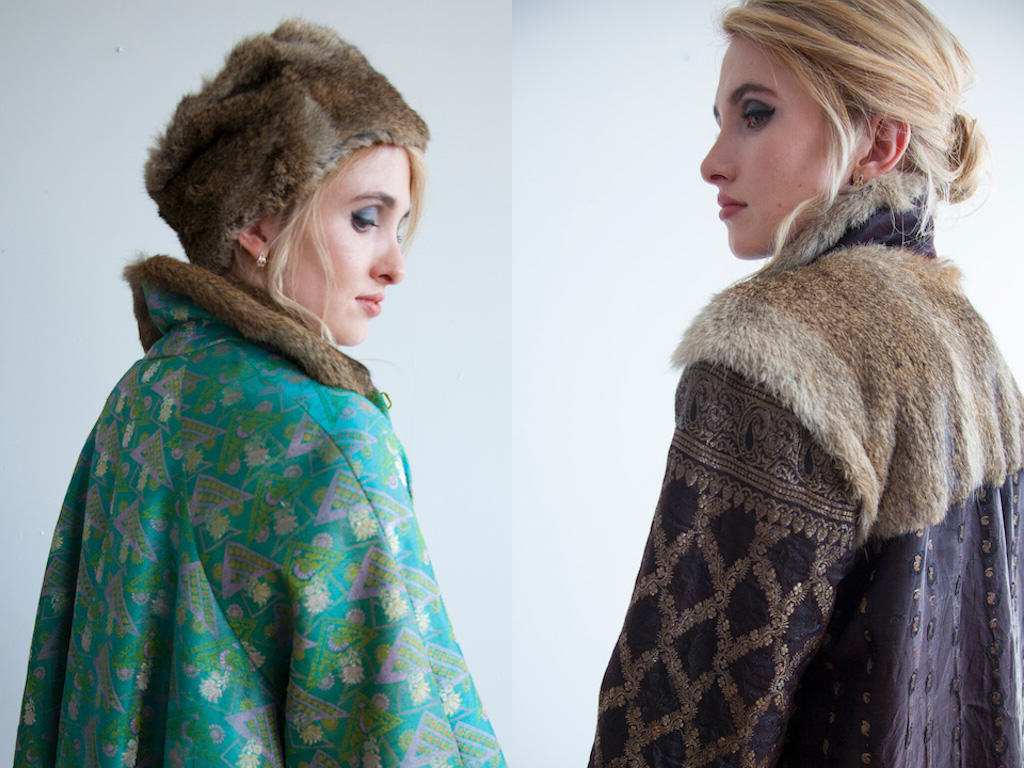
TaF: North America has its own problems with invasive nutria as well as indigenous furbearers that cause problems if their populations are not managed. For example, muskrats destroy marsh habitats, beavers cause flooding, and coyotes prey on livestock and are expanding into urban areas where they prey on pets and bite children. Are you supportive of using these species for their fur, provided it is done sustainably?
Jane Avery: To me it’s all about context. The world we live in is so very different to the world of 150-200 years ago. Sure, North America has its problems with invasive species too, and certain situations demand certain responses. If it’s deemed these animals must be "sustainably" culled then it would be disrespectful not to make practical use of their fur.
With the New Zealand rabbits, the context is created by human history. The tragedy is that they were introduced to this country in the first place.
I believe anyone in the business of exploiting animals for what they can provide to humans should check their moral compass on a regular basis. We shouldn’t necessarily do things just because that’s the way we’ve always done them. Everything must be considered within its realistic context and with the good of the environment central to decision-making.
***
SEE ALSO: Inside a rabbit fur fashion designer's 10 sqm solar-powered eco cabin in Central Otago. This NZ Life.
After pressuring a number of designer brands to stop using fur in their collections, animal activist groups that seek to…
Read More
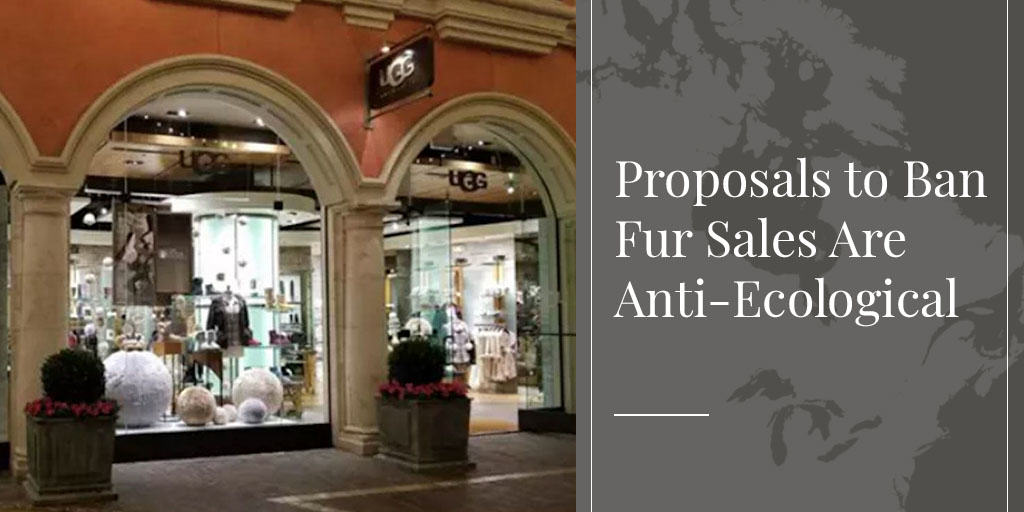
After pressuring a number of designer brands to stop using fur in their collections, animal activist groups that seek to impose a vegan lifestyle on everyone are now lobbying politicians to ban fur sales in San Francisco, Los Angeles and several other cities.
While a few big brands did recently announce that they'd be dropping fur – causing much excitement in activist circles – about 70 percent of top designers were still showing fur in their most recent Fall/Winter collections.
Fur “bans” are equally illusory. Vegan activists love to cite West Hollywood as the first US town to declare fur sales verbotten, but they neglect to mention that the sale of wild fur apparel and accessories remains completely legal there. In fact, a California court has determined that municipalities cannot ban the sale of wild furs even if they want to, because wildlife management is under state jurisdiction. Meanwhile, the “fur ban” proposed for San Francisco would also exempt sheepskin because, well, I guess they like their Uggs in California.
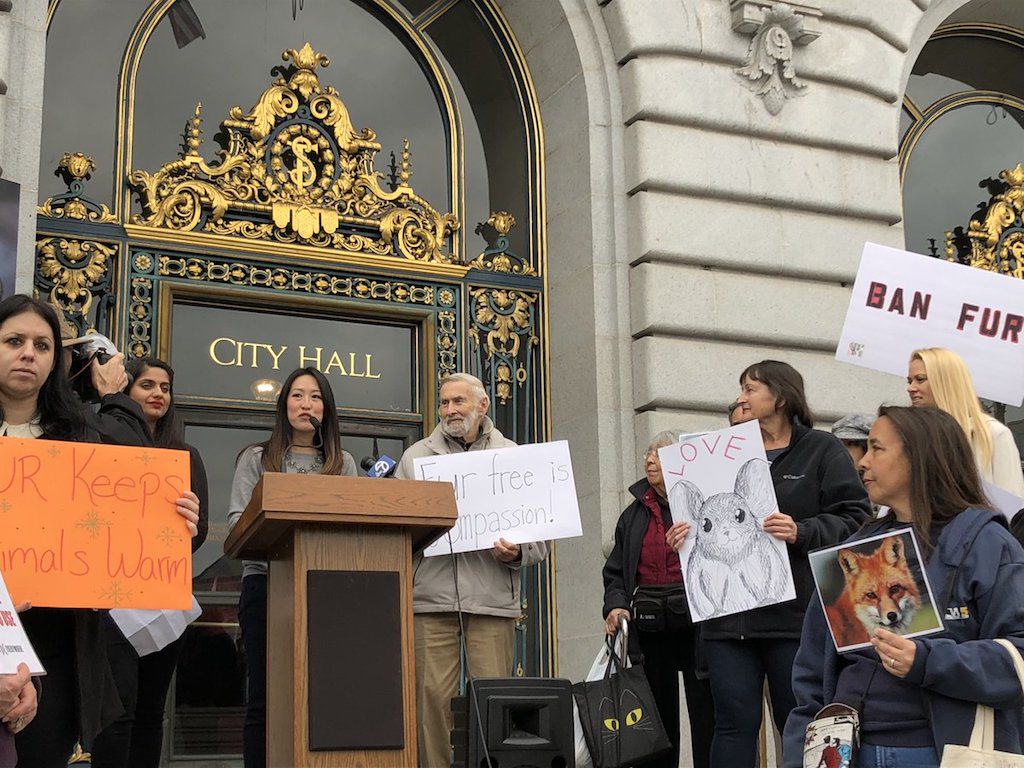
More important than this hypocrisy, however, is the troublesome reality that anti-fur campaigning actually works against environmental sustainability at a time when this is becoming a societal priority – especially in California.
The sustainable use of renewable natural resources is a keystone of conservation policy, as promoted by the International Union for Conservation of Nature (IUCN). And, guess what? The modern fur trade is, in fact, an excellent example of the responsible and sustainable use of nature. This is the story that animal activists don't want the public to hear.
SEE ALSO: Fur is a sustainable natural resource.
The truth: Wild furs are taken from the naturally-produced surpluses of abundant furbearer populations, never from endangered species. This is assured by state, national and international regulations.
The truth: Some wild furbearers would have to be culled even if we didn’t use fur. Coyotes are the number one predator of lambs and calves, and are now attacking pet dogs and cats – and sometimes even people – in cities across North America. Raccoons, foxes and coyotes must be controlled to protect ground-nesting birds and endangered sea turtle eggs, and to prevent the spread of rabies and other dangerous diseases. Overpopulated beavers flood roads, homes, fields and forest habitat. And the list goes on.
So given that we have to cull these animals, surely it is more ethical to use the fur than to throw it away.
SEE ALSO: Is it ethical to produce, buy or wear fur?

But what about farm-raised furbearers, you may ask? Farmed mink are fed left-overs from our own food production – the parts of chickens, pigs and fish that we don’t eat and would otherwise end up in landfills. The mink manure, carcasses and soiled straw bedding are composted to produce valuable organic fertilizers, completing the agricultural nutrient cycle. Nothing is wasted.
Farmed mink also receive excellent nutrition and care; this is the only way to produce the high-quality fur needed to compete in international markets.
SEE ALSO: Facts about fur farming.
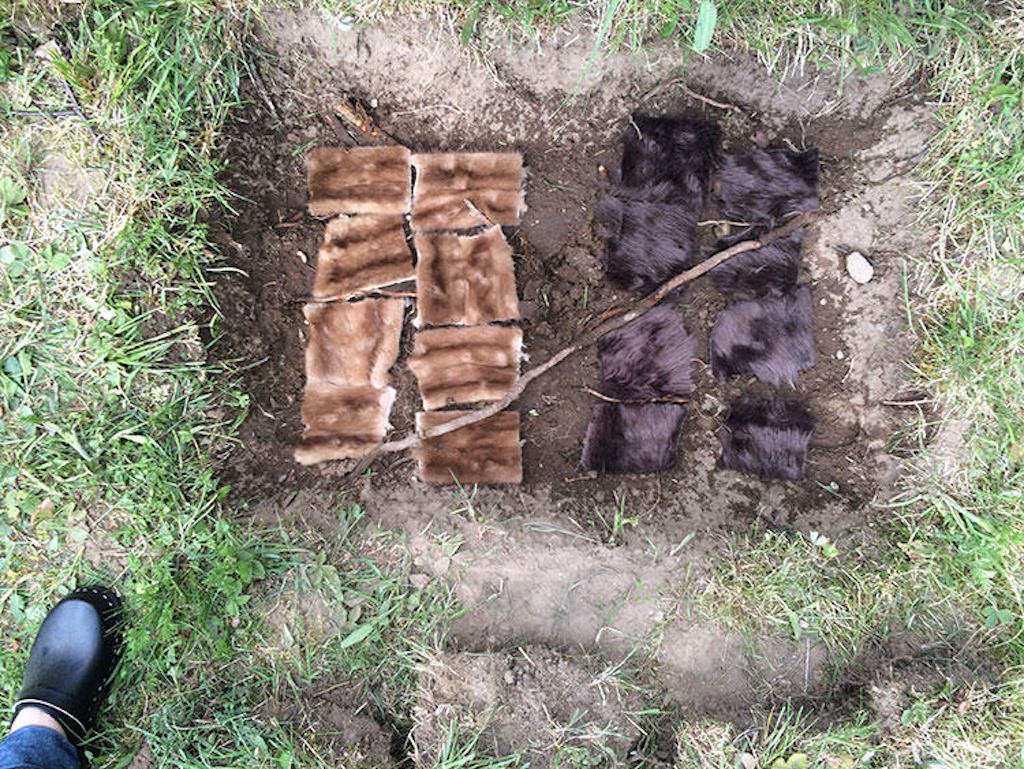
Above all, fur is a natural and long-lasting clothing choice. In this age of fast-fashion, a good mink coat is often worn for 30 years or more. Fur apparel can also be taken apart and completely restyled as fashions change, or recycled into accessories. And after many decades of service your fur can be put into the garden compost where it will biodegrade and return to the soil. This is true environmental sustainability.
The fake furs touted by animal activists, by contrast, are generally made from petroleum, a non-renewable resource, and will not biodegrade. Troubling new research, moreover, is showing that fake furs and other synthetic materials can leach micro-particles of plastic into waterways (and the food chain) every time they are washed. This is not good for animals or nature.
The increasing use of fur for trim, accessories, vests and other smaller pieces makes fur more accessible than it has ever been. This may explain the urgency of recent anti-fur campaigning, because if it was true that no one wanted to wear fur anymore – as activists claim – there would be no need to ban fur sales.
Perhaps this is what frustrates animal activists: most people do believe that it is morally acceptable to use animals for food, clothing and other products, so long as this is done responsibly and sustainably.
Question: What do animal activists do when, despite all their propaganda, young designers and consumers continue to choose fur? Answer: They try to take away their right to choose!
And this brings us to another serious problem with recent activist calls for municipal bans on fur sales. No one forces animal activists to wear fur or leather, or to eat meat or use any other animal products. So what makes them think they have the right to impose their personal beliefs on everyone else?
This issue goes far beyond the debate about fur. Most people in North America came here to have the right to make their own decisions. That fundamental freedom should not be taken for granted, or given away lightly, whatever your personal feelings about using fur or other animal products.
It was a crisp, bright morning in early April when I set out for my first lesson in Spring muskrat…
Read More
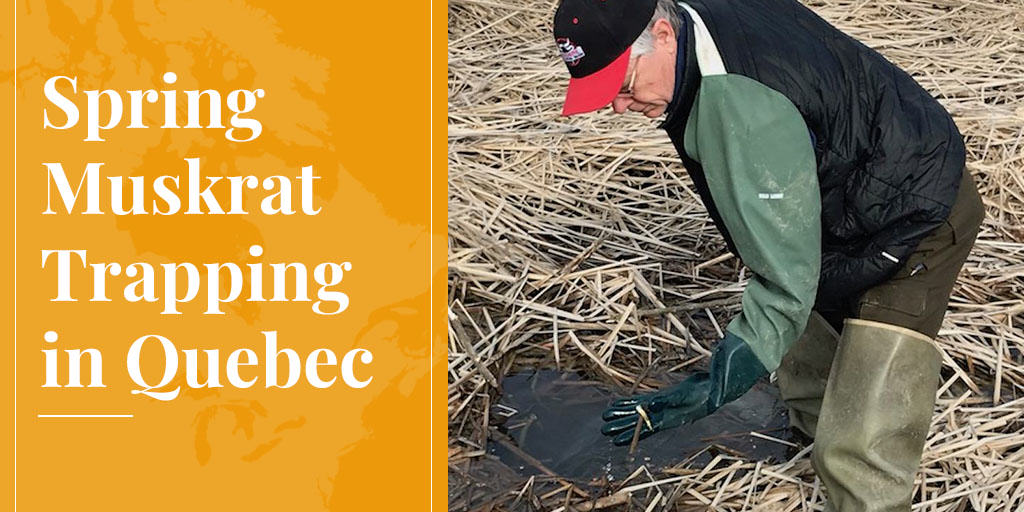
It was a crisp, bright morning in early April when I set out for my first lesson in Spring muskrat trapping. I had agreed to meet my trapper friend in the village of Saint-Charles, on the Richelieu River, about a half-hour north-east of Montreal. A plaque in front of the small town hall recounted the role of this picturesque spot during the 1837 rebellion by French Canadian “Patriotes”, including their defeat here by British troops on November 25 of that year.
Pierre arrived a few minutes later and I threw my gear into the back of his mud-splattered truck, beside a large white plastic bucket of traps and another containing several muskrats he had taken earlier that morning. As we headed out of the village and away from the river, houses quickly gave way to large fields and the occasional barn. On each side of the road were wide drainage ditches, with a foot or two of Spring melt water running swiftly through a few remaining patches of snow and last summer’s dry, flattened rushes – prime muskrat habitat.
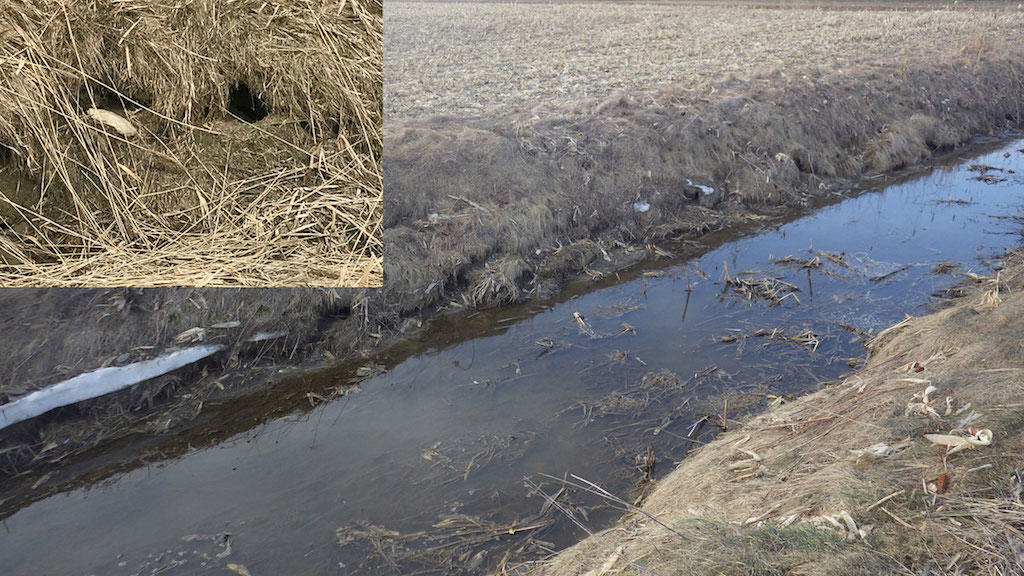
Pierre was driving slowly and then he stopped, pointing out a tiny flash of orange tape, a marker he had left, barely visible in the dry weeds beside the gravel road. He climbed out of the truck and clambered down the embankment in his hip waders, and I watched as he felt about in the weedy stream. A moment later he straightened up to display a sleek, wet muskrat in his rubber-gloved hand. He then showed me how the rotating-jaw trap had struck directly behind the rodent’s skull, killing it instantly – much like a large mousetrap.
Pierre was using two models of quick-killing trap, both tested and certified for use under provisions of the Agreement on International Humane Trapping Standards (AIHTS). And who better to demonstrate the efficient performance of these devices than my friend Pierre Canac-Marquis, the long-time coordinator of the Fur Institute of Canada’s humane trap research and development program? He has always considered animal welfare concerns as a top priority in all trapping activity.
SEE ALSO: Fur Institute of Canada champions humane and sustainable fur production.
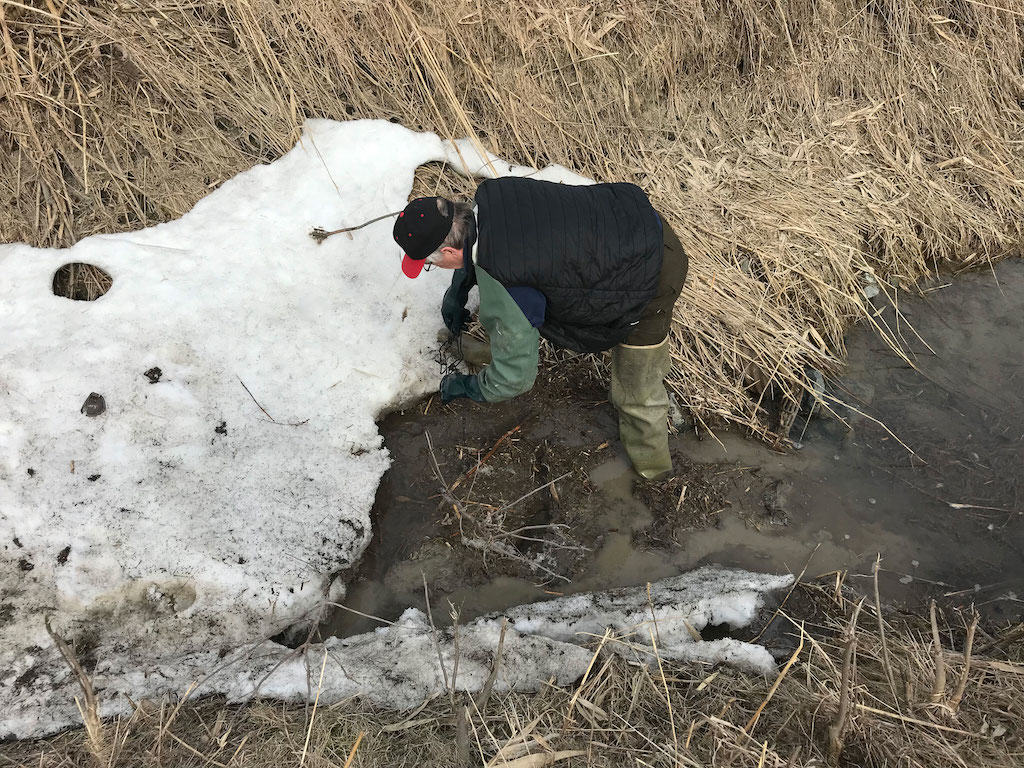
Pierre had recently retired from his career as a furbearer biologist with the Quebec wildlife department where, among other notable achievements, he led “Operation Raton”, a multi-year, multi-million-dollar program to contain the advance of rabies in raccoons spreading north from the US – an important story to be told in another blog post. But he continues to coordinate the FIC’s world-leading trap-research program, and he remains an avid trapper.
“It’s a passion,” Pierre explained. “It’s certainly not for the money; I’ll be lucky to get four dollars a pelt for these rats. But the farmers are happy we’re here, because muskrats undermine the stream banks with their burrows. That speeds erosion and they lose large strips of farm land along the drainage ditches,” he said, pointing out a large burrow entrance, half-hidden among dry reeds in the stream bank. This of course represents a major loss of income to these farmers.
“And over there, they raise horses,” said Pierre. “If a horse steps onto a part of the field that has been burrowed by the muskrats, they can sink right through and break a leg.”
And muskrats – like all rats – are very prolific.
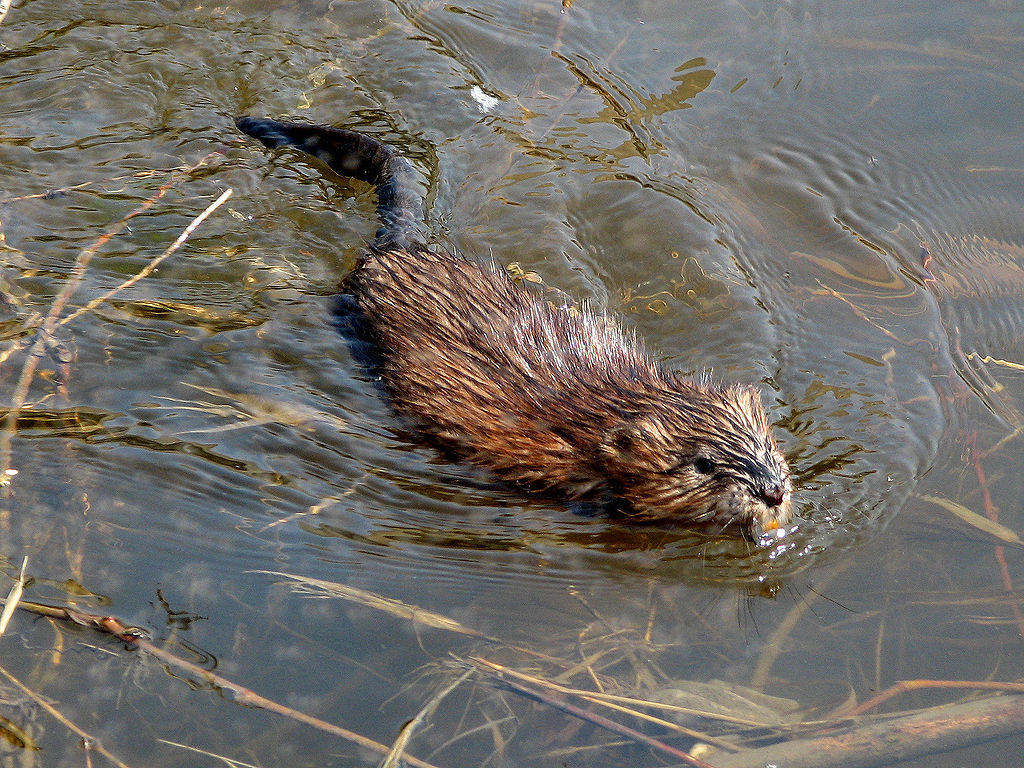
With a gestation period of 28-30 days, and females sexually mature at six to eight weeks, muskrats can breed year-round, producing five or six litters annually in the southern US. In Canada, they usually produce two or three litters of six to nine kits. Natural mortality is also high, and research has shown that harvest rates of 60-75% are sustainable. Primarily herbivores, muskrats eat the shoots, roots, bulbs and leaves of all sorts of aquatic plant, but cattails, also called bulrushes, are favoured. They will also eat some crops (carrots, corn, alfalfa, soybeans) and sometimes clams, mussels and small fish.
Weighing 2-3 pounds (1-1.4 kg), and measuring 16-24 inches (40-65 cm) in length, muskrats (Ondatra zibethicus, as biologists know them) have large, yellowish teeth and long, naked tails. More interesting from a fur-trade perspective: muskrats have very dense, waterproof underfur covered by long, glossy-brown guard hairs, to protect them in their semi-aquatic environment. Because of its warmth, abundance, and relatively low cost, muskrat fur was very popular through much of the 20th century. Often it was sheared and dyed to imitate more expensive furs, and sometimes marketed under more glamorous names like “Hudson Seal”. Today, muskrat is still a popular fur to make warm and lightweight winter hats, notably for the Canadian Mounties (RCMP) and other police forces.
“Once, I had parked my truck by the side of one of these country roads and when I climbed back up the embankment there were two Quebec Provincial Police officers waiting for me,” said Pierre. “They didn’t recognize my vehicle and were wondering what this suspicious guy was doing down there. I pointed to their heads and explained that I was harvesting fur for their new hats! They were fascinated. Like most people, they had never thought where their fur hats came from.”
We spent the next few hours navigating the back roads, checking traps. Pierre had added a modern twist to this traditional art: many of the trap locations had been punched into his GPS, making them much easier to find. Sometimes the traps were empty, but more often we added to the collection in the back of Pierre’s truck.
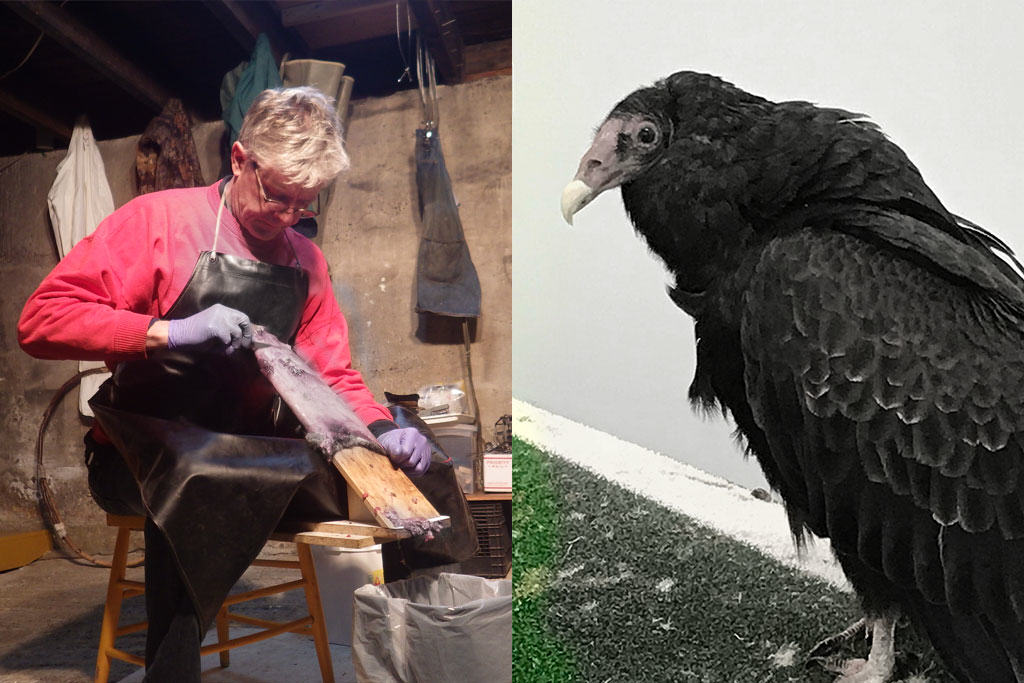
When we completed his round, we swung by St-Charles-sur-Richelieu again to pick up my car, and I followed Pierre for one last stop, 20 kilometers away at a raptor rehabilitation clinic in the town of St-Hyacinthe. The clinic is supported by the University of Montreal’s Faculty of Veterinary Medicine, and the Quebec Union for the Rehabilitation of Raptors. Injured birds of prey are sent here from all over the province and beyond. The clinic also has the educational objective of assisting in the training of hundreds of veterinarians in the field of wildlife medicine and wild bird rehabilitation.
The technicians at the raptor clinic were pleased to see Pierre, but their feathered charges were more interested in the contents of the big sack he carried from the truck: carcasses from muskrats Pierre had skinned the previous days.
SEE ALSO: Top 5 tasty furbearers: Muskrat stew and more.
After a quick tour of some of the magnificent raptors being cared for in the facility, I said “bye” to Pierre and headed back down the highway to Montreal.
As Pierre said, the dozen muskrats we’d collected that morning wouldn’t bring him more than $50 at the next auction – not much for the time spent setting traps, checking them, skinning muskrats, and stretching and drying the pelts. But more important, he’d helped with the rehabilitation of some magnificent birds, and assisted some farmers and ranchers in protecting their land and animals, contributing to the "joie de vivre" of this heritage rural community.
Not bad for a morning’s work, all in all!
In response to rumors of his demise, American writer and humorist Mark Twain is famously quoted as saying, “The reports…
Read More
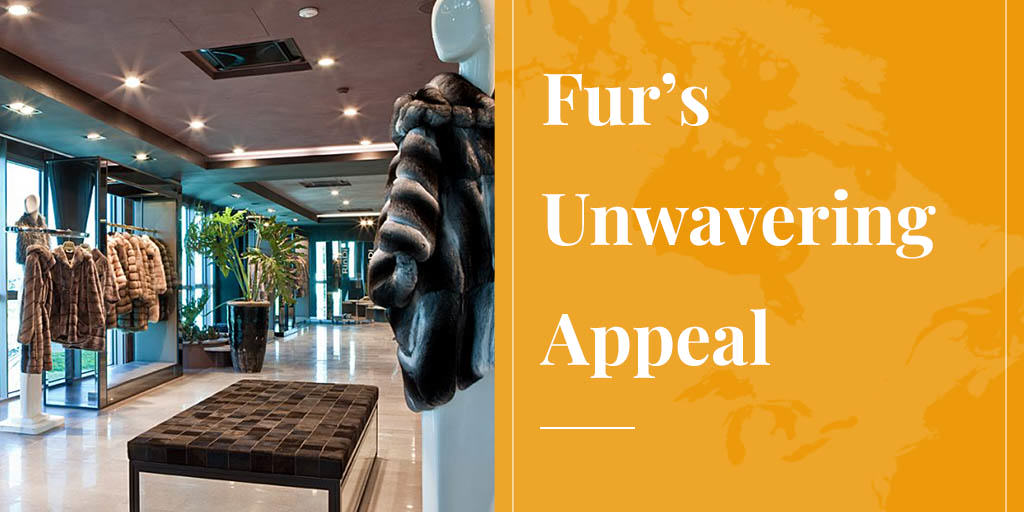
In response to rumors of his demise, American writer and humorist Mark Twain is famously quoted as saying, “The reports of my death are greatly exaggerated.” It seems a similar quip might be made in response to comments from legislators, anti-fur zealots and the media that have appeared in discussions of the San Francisco fur ban ordinance. Let’s take a minute to delve into the truth about fur’s unwavering appeal within fashion.

Just what is all this noise about the death and decline of the fur industry? One need only look at the runway images from the fall 2018 collections and the recent couture collections to know it is absolutely not true! Sure, there have been announcements by a few designers that they won’t be using fur next season, but for every one of them there are several others, both established and emerging designers, that are introducing fur into their collections. They have discovered the unparalleled creative possibilities of fur and have come to understand the truth about the industry’s welfare standards and the value of renewable, sustainable products.
SEE ALSO: The truth about "fur free" designer brands.
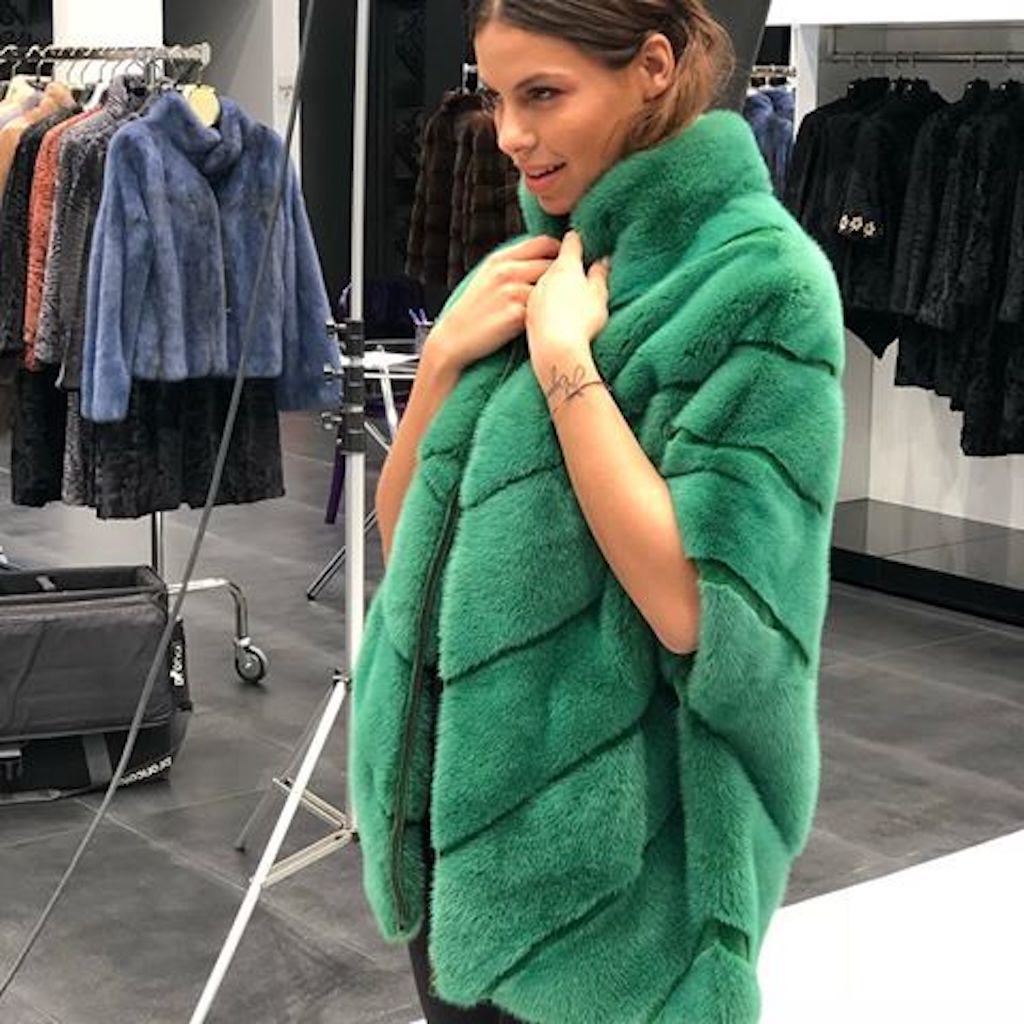
So what is the truth about fur’s unwavering appeal and how consumers feel about it?
If you want to look at the research, Gallup’s annual poll on consumer attitudes towards a range of products showed that a significant majority of respondents supported the “moral acceptability” of fur in 2018 and, in fact, the total percentage reflected an increase of 3% over the previous poll. Another firm, Nanos Research, conducted a series of focus groups in several cities across the US just a few years ago. They found that in every city 100% of the respondents supported the consumer right to choose to buy and wear fur. It is important to note that half of the people in these groups identified as fur wearers and half of them stated they would not wear fur. That’s right ... 100% supported the freedom to choose to buy fur!
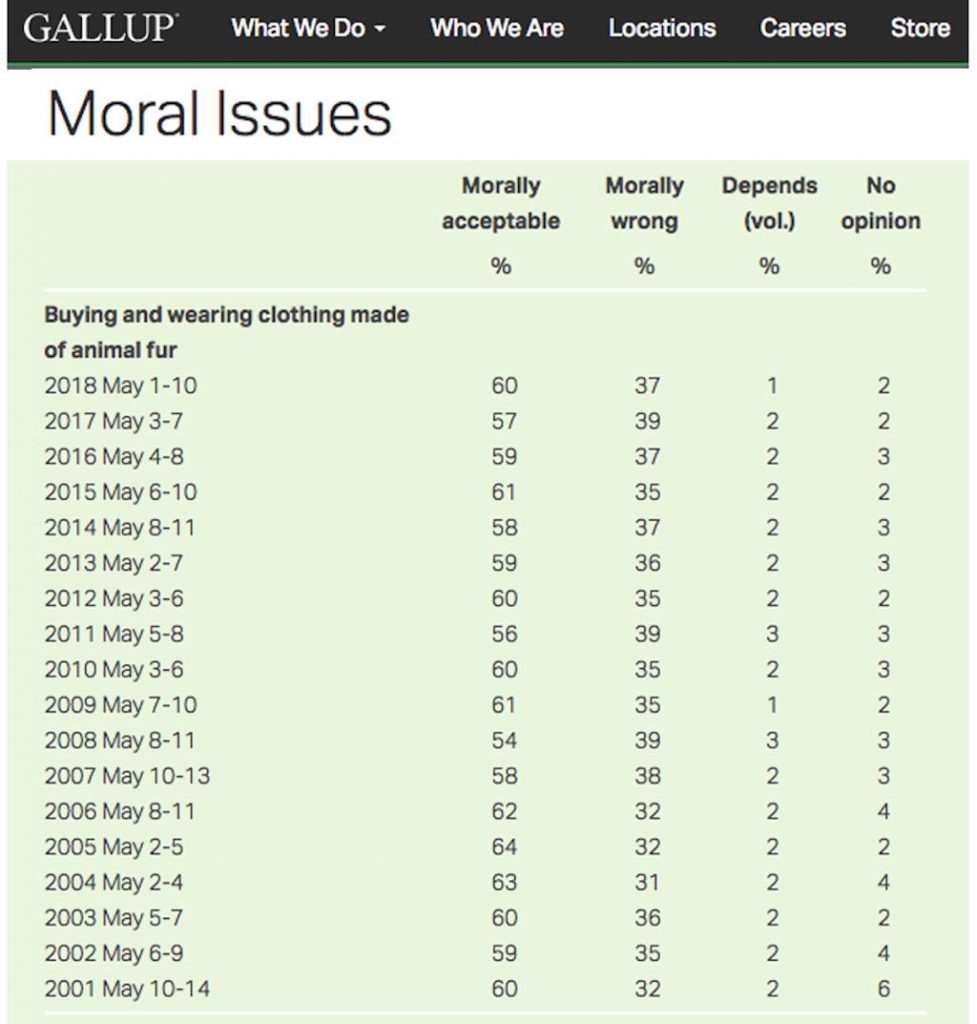
Suspicious of research? Then let’s look at the best indicator of any when it comes to consumer attitudes, the cash register. If consumers weren’t buying fur, retailers would not be taking up valuable space and spending marketing dollars to sell it. And if retailers weren’t offering it, designers and manufacturers would not be producing it. It is that simple. But as the fall 2018 and couture runways show, there are a lot of great fur fashions coming this season.
If you pay attention this fall you will see fur fashions, fur shoes and fur accessories in designer boutiques, outerwear and sporting goods stores, shoe salons and all over the major luxury department stores. Just last week I visited the Bloomingdale’s in Century City, CA and saw 45 different shoe styles with fur on display ... and we’re still in the heat of summer!
Clearly the anti-fur zealots have not been successful in changing consumer attitudes enough over the past 35+ years, nor have they put a dent in fur’s unwavering appeal. As a result of this failure, they now turn to legislators to force their anti-fur agenda upon the rest of us. It is a gross violation of the core principles of democracy.
Here at Furinsider we are admittedly fur-friendly. But our focus is fashion. In that regard, we celebrate the creative freedom that allows designers to innovate and produce fresh new fashion season after season.
SEE ALSO: "Fur Futures" has changed my life's direction.
And we celebrate the freedom inherent in our democracy that allows us, the public, to choose to buy and wear fashion that expresses our individuality. All of which is to say, if consumers want fake fur we are all for it, as long as they have done their homework and considered the environmental threats imposed by the microfibers that enter our waterways and are ingested by marine life. And, of course, as long as it is well designed!
At the same time, if consumers want real fur for its rich, luxurious texture, its warmth, the incredible fashions and accessories made from real fur, or the very fact that they are concerned about the environment and they choose to buy products that are renewable and sustainable ... we say go for it!
For those that choose not to buy fur, wear leather, or eat meat, we respect those choices. But, you have no right to take these freedoms from the rest of us.
Our July news roundup focuses on two areas where a little more common sense could solve everyone’s problems. When wild…
Read More
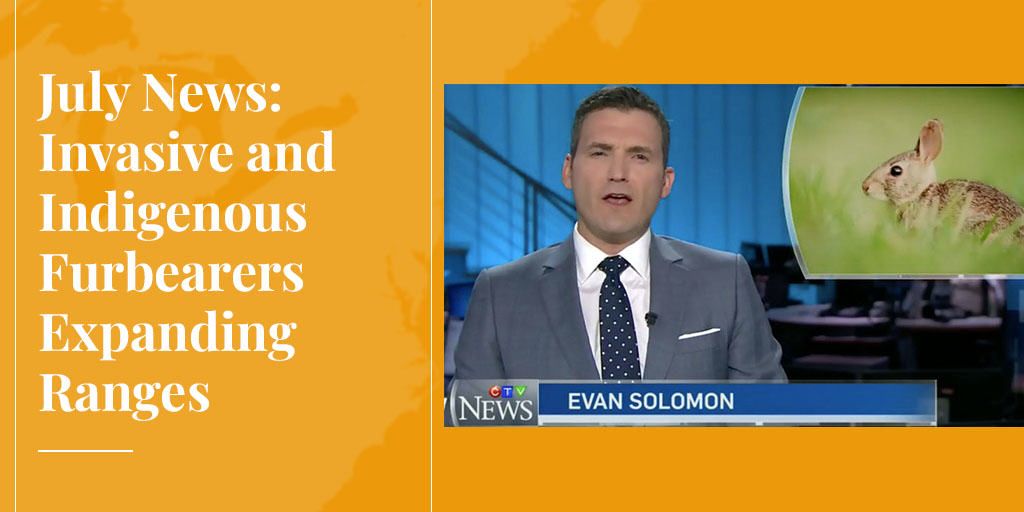
Our July news roundup focuses on two areas where a little more common sense could solve everyone's problems. When wild furbearer populations grow too large, whether they're invasive or indigenous, common sense suggests we cull them and make use of the fur and meat (if they're tasty). But animal advocates want us to share space even with dangerous wildlife while calling for fur bans.
The Darwin Award for managing invasive wildlife goes to Canmore, Alberta, where a program is under way to control an explosion of rabbits. It's not that the locals don't like rabbits, but some don't like all the hungry cougars, coyotes and bears they're attracting. So far, 1,300 rabbits have been trapped and euthanised, with most going as feed to a wildlife rehab centre. But now everyone's upset: rabbit lovers, obviously, but also taxpayers who are paying $300 per rabbit caught! Plus the program's not working because the rabbits are breeding like, well, rabbits. Duh!
A fashion designer in New Zealand, where invasive rabbits cause extensive environmental harm, has a much better idea. Jane Avery is turning rabbits into fur coats under the label Lapin (French for rabbit). "If you wish for the luxury of fur, then maybe you should be making an eco-conscious choice,” says Avery, who is not so much a fur fan as a lover of her natural environment.
Don't expect rabbits to vanish from Alberta or New Zealand any time soon, but efforts to eradicate invasive species do occasionally succeed. One such case is the American mink in Scotland's Outer Hebrides. Decades after mink were released from fur farms, wildlife conservationists now believe they finally have them under control.
Indigenous wildlife can also present problems, like "urban coyotes". In a classic case of "you can't please everyone", traps were first installed in a park in Cambridge, Ontario, and have now been removed following a campaign against the "cruel" traps by Coyote Watch Canada. Said one confused resident who's afraid of the coyotes, "The city has to do something about it, but not hurting them as well because they have the right to live."
SEE ALSO: Will urban coyotes change the animal rights debate?
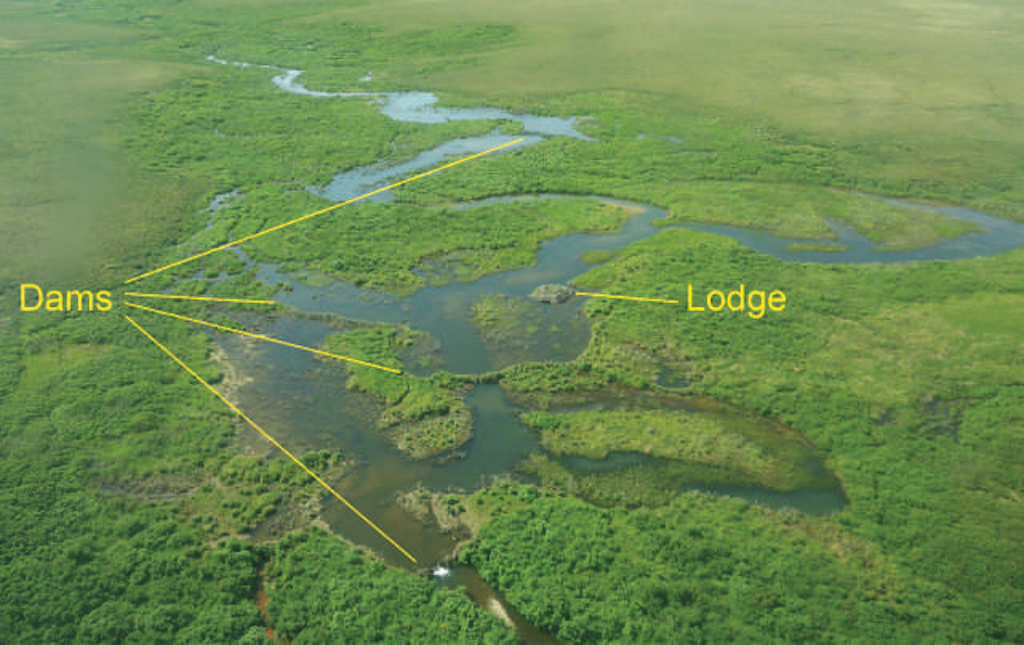
Beavers are also expanding their territory, onto the Alaskan tundra. “You just need to look at the map to see how well beavers recolonized the rest of North America after over-trapping," says an expert. "They are now in all the lower 48 states, and Alaska is the last standing – and it’s going to fall.” Given the radical changes beavers can bring to a landscape, the jury is still out on whether this is a good or a bad thing.
SEE ALSO: Abundant furbearers: An environmental success story.
Regardless of how some furbearers are expanding their range, calls for fur bans are also spreading.
In the UK, a Parliamentary debate in June considered the possibility of banning fur imports post-Brexit. The government said no, but the anti-fur lobby have kept up a steady flow of stories to the hungry media. Grabbing headlines in July was the spurious argument that fur should be banned because a few retailers have been caught labelling it as fake. The government has rightly said this is not grounds for a ban, but it seems to be wavering, as this BBC report shows.
Also in Europe, Ireland's Green Party will be reviving its bid to have fur farming banned there. This almost happened back in 2009, but got derailed during a period of political turmoil.
Back on this side of the pond, a ban on fur sales is approaching in San Francisco, and the fur industry has threatened legal action if it goes ahead. Animal rights leaders have also announced that New York City is in their cross hairs.

Last month Truth About Fur interviewed Katie Ball from Thunder Bay, Ontario. Katie says fur is in her blood and it shows! When she's not on the trapline, she's running her own fur fashion company or advocating on behalf of several outdoors associations.
We also ran an overview of the latest annual general meeting of the Fur Institute of Canada. For those not already in the know, the FIC is the country’s leader on humane trap research and furbearer conservation, and is the official trap-testing agency for the federal and provincial/territorial governments.
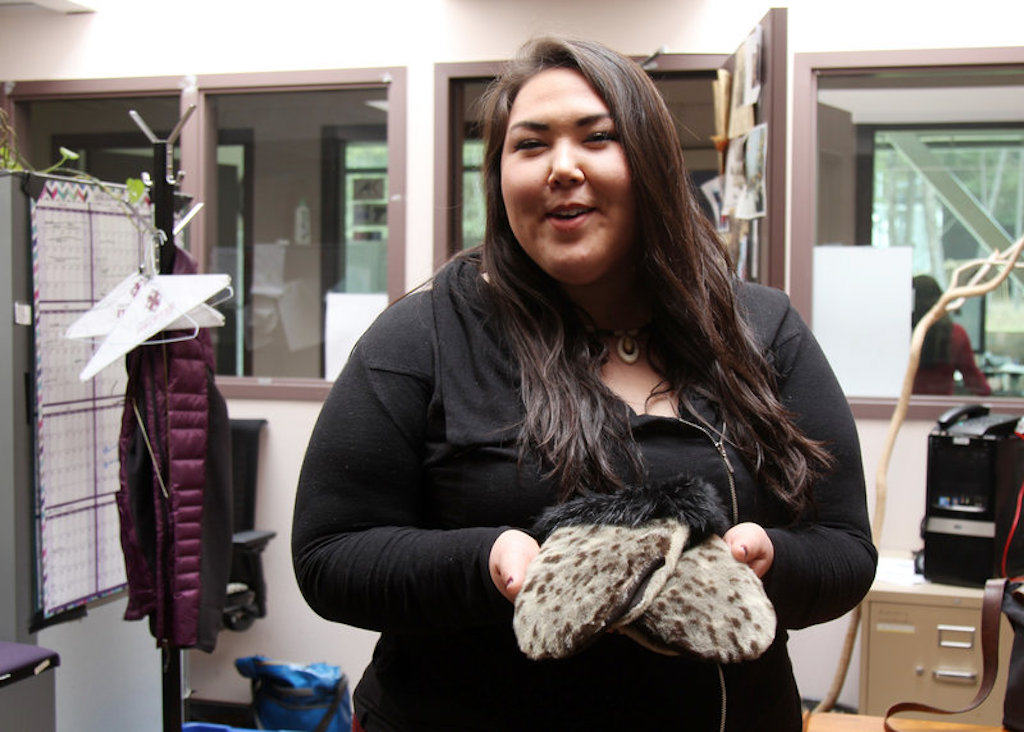
Let's close with some news in brief ...
In 2018, the International Fur Federation and Fur Europe commissioned a study comparing degradation of real and fake fur in a simulated landfill. Now they've released a video summarising the findings.
SEE ALSO: The Great Fur Burial.
In sealing news, a reopened tannery for sealskin in Alaska is having trouble keeping up with demand (pictured above), while on one of the remote Pribilof Islands the annual fur seal hunt was allowed to start three days early because groceries were running out.
Farmed mink production in the US fell slightly in 2017, but the total value of the harvest was up thanks to higher prices. Read the official US Department of Agriculture report and an analysis by Capital Press.
This year's winners of the Yukon Innovation Prize say they want to turn the fur industry upside down. Team Yukon Fur Real plans to buy pelts from local trappers and help artisans create fur products that can be sold to consumers.
Calling sports fans, a fur coat owned and signed by Joe Namath is up for auction! To place your bid, click here. As of August 1, there are zero bids, perhaps because the reserve price is $10,000!
